Soft, subdued yet wonderfully versatile, a sage green couch works like a “colorful neutral.” Designers praise the hue for instantly calming a room while pairing effortlessly with both warm and cool palettes. Below, you’ll find 20 precisely detailed living-room ideas—each one expanding on how to style, light, and accessorize that sage centerpiece so your space feels intentional, inviting, and unmistakably yours.
1. Sage Green Couch with Natural Wood & Linen
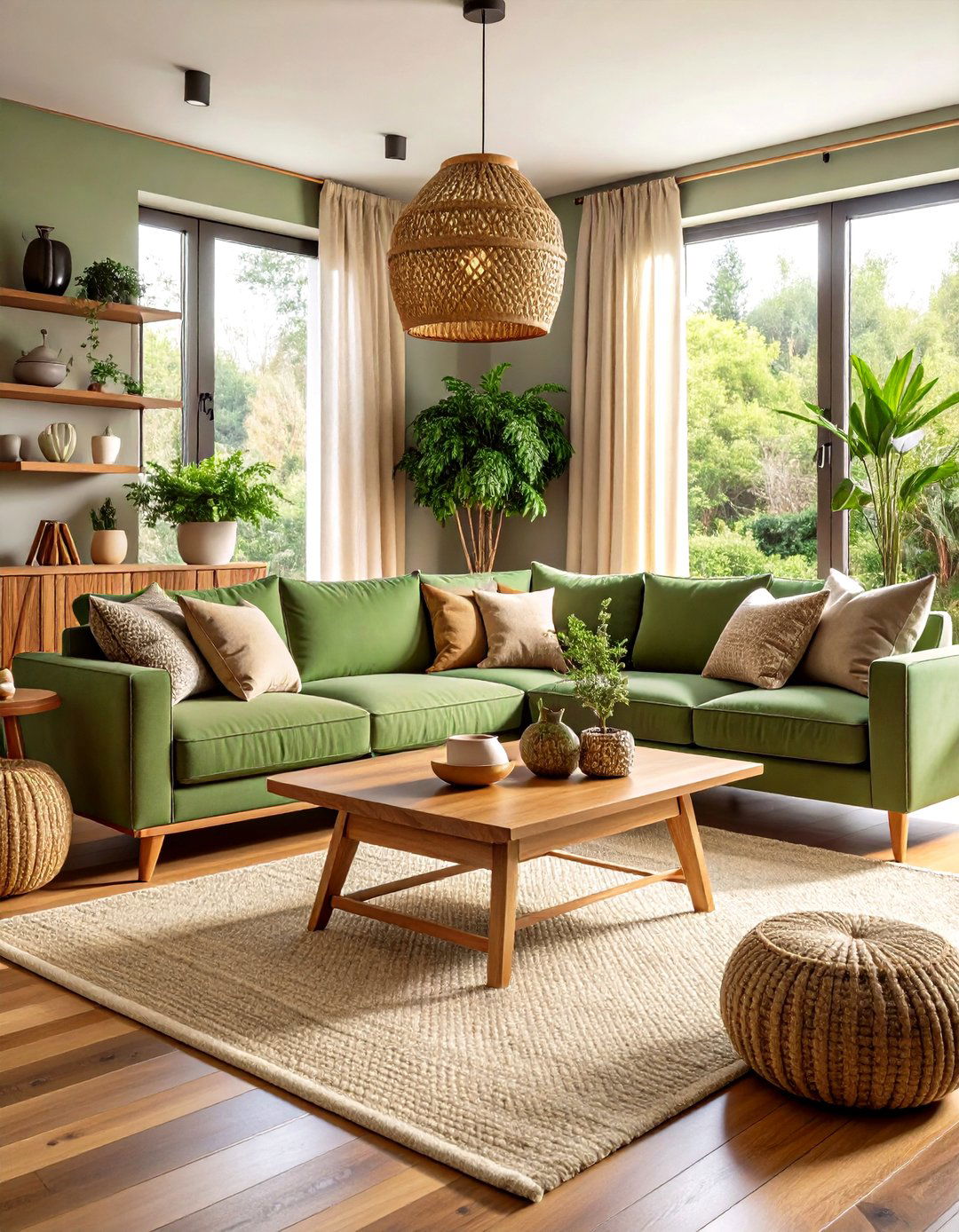
The moment natural oak coffee tables, rattan lighting, and unbleached-linen curtains flank a sage couch, the room feels grounded in nature. Earthy timber grains echo the sofa’s muted undertone, while breathable linen keeps the palette light instead of heavy. Accent with speckled stoneware planters and matte-black hardware for subtle contrast, then finish with an oversize jute rug to tie all the tactile elements together. The mix of organic textures amplifies sage’s soothing vibe without adding extra color, so the scheme stays cohesive and timeless.
2. Sage Green Couch in Monochrome Sage Layers
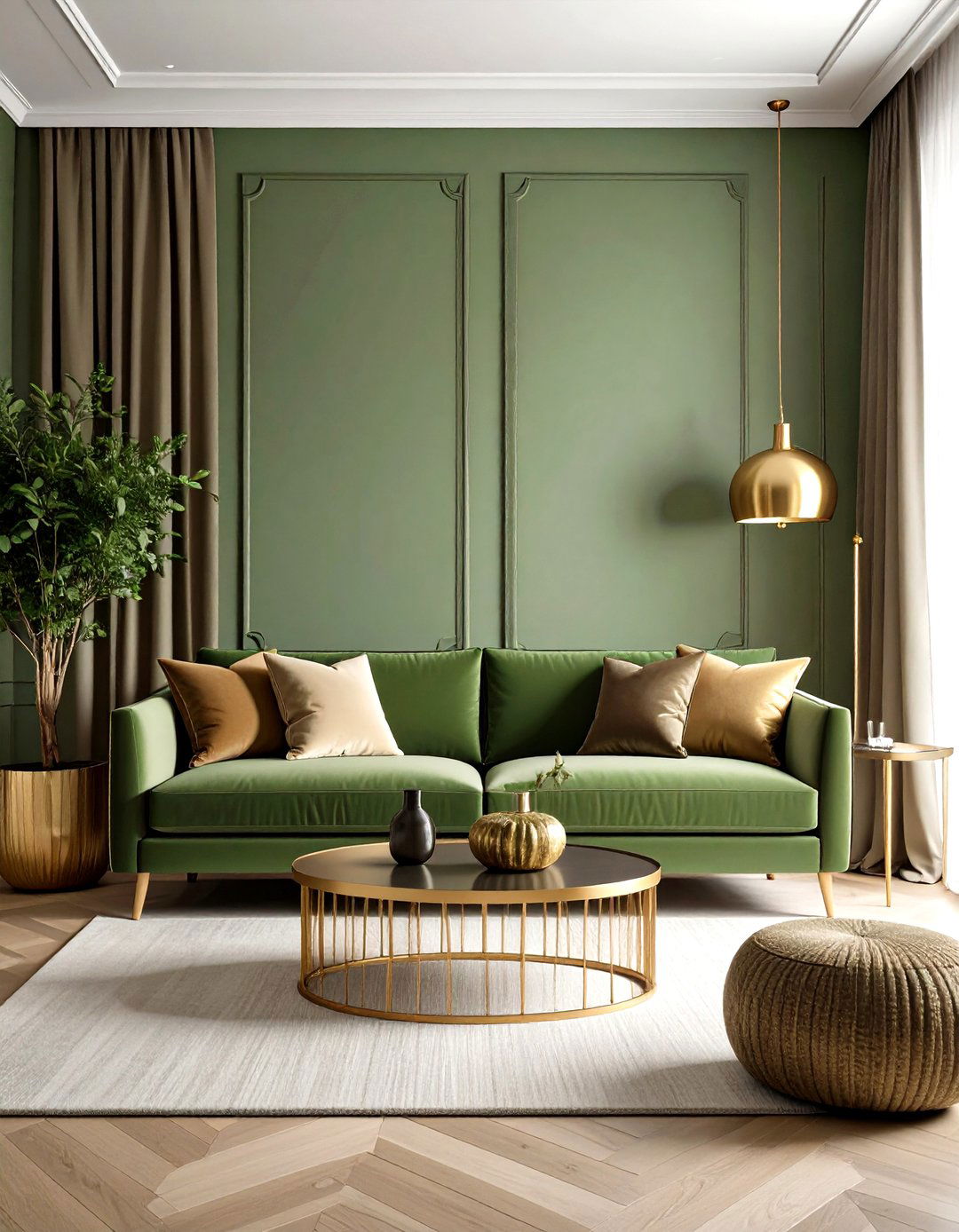
For an enveloping look, paint walls two tones lighter than your sofa and bring in cushions one shade darker. Soft tonal drapery and a subtly patterned sage rug add depth without visual clutter, letting the couch feel custom-built into the architecture. This tone-on-tone approach works especially well in small spaces because similar values blur boundaries and make walls recede, creating calm continuity. Keep metals warm (antique brass, aged bronze) so the palette doesn’t turn cold, and introduce a single sculptural lamp in white to break the green gently.
3. Sage Green Couch Paired with Burnt Orange Pops
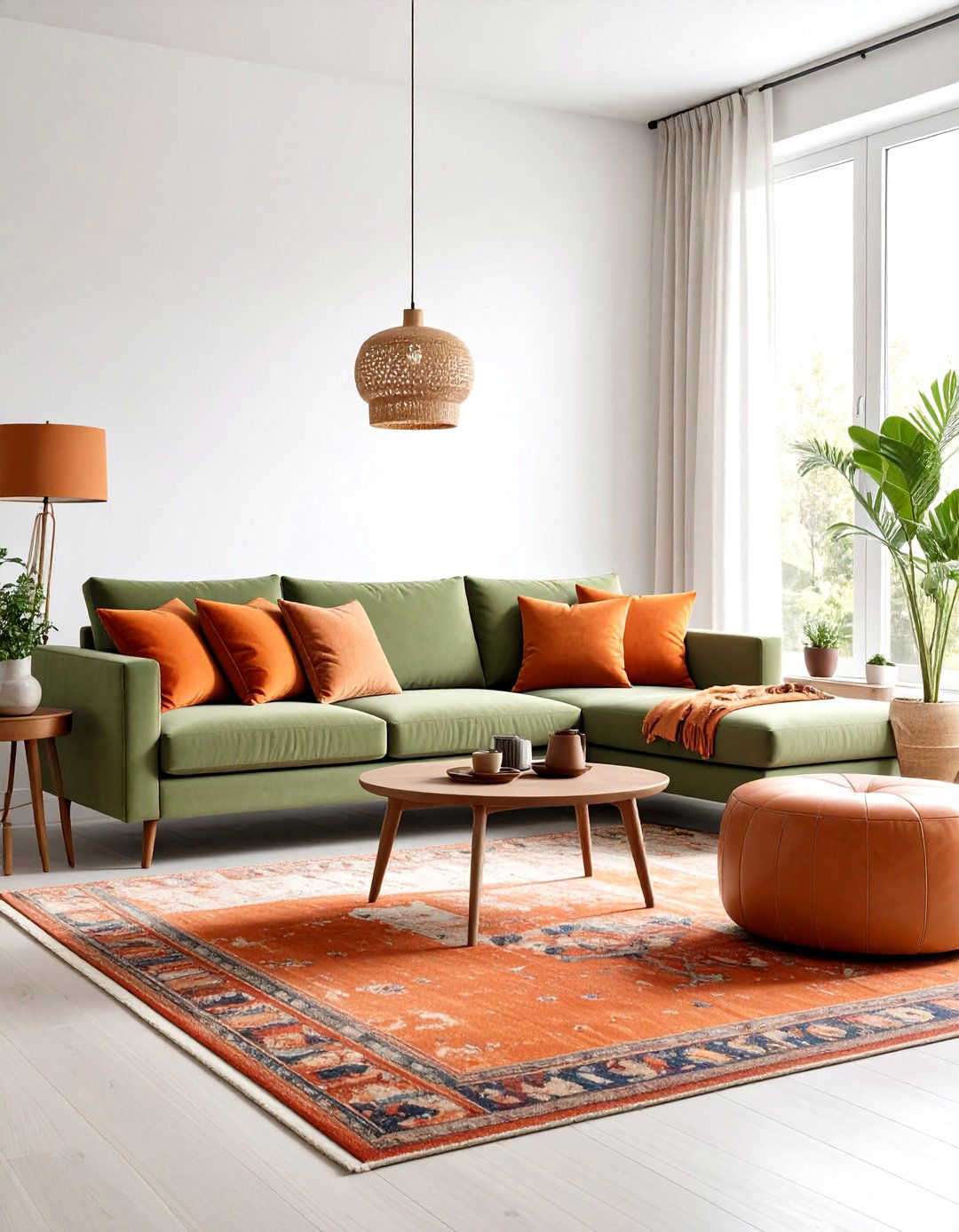
A handful of terracotta or rust-orange velvet cushions turns sage from serene to spirited. Those orange notes sit opposite green on the color wheel, so even small accessories feel electric and modern. Add a woven kilim with sunset hues or a rust leather ottoman to repeat the accent and ensure balance. Finish with walnut side tables—their reddish undertone bridges sofa and cushions for a designer-level palette pulled straight from autumn landscapes, yet usable year-round.
4. Sage Green Couch amid Creamy Minimalist Scandi
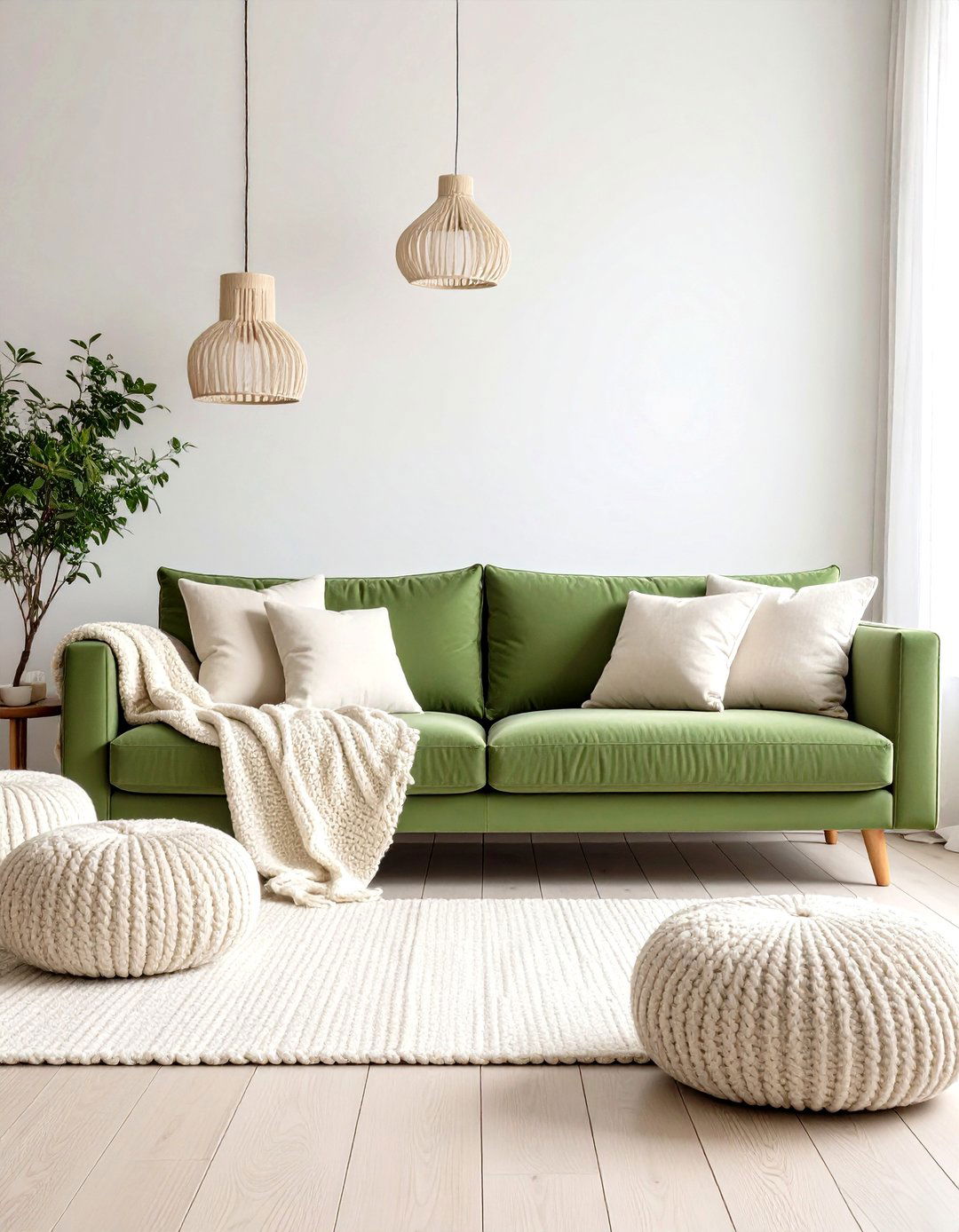
Clean Scandinavian lines shine when a sage sofa floats against warm off-white walls, pale ash floors, and snowy boucle accent chairs. The nearly-monochrome setting amplifies natural light and emphasizes shape over color, ideal for lovers of minimalism. Layer chunky knit throws and pale ceramic vases to introduce cozy texture without disrupting the hush. A single branch of eucalyptus in a glass cylinder adds height while echoing the sofa’s hue. The result is airy, gallery-like, and refreshingly uncluttered.
5. Sage Green Couch Anchoring Boho Textured Space
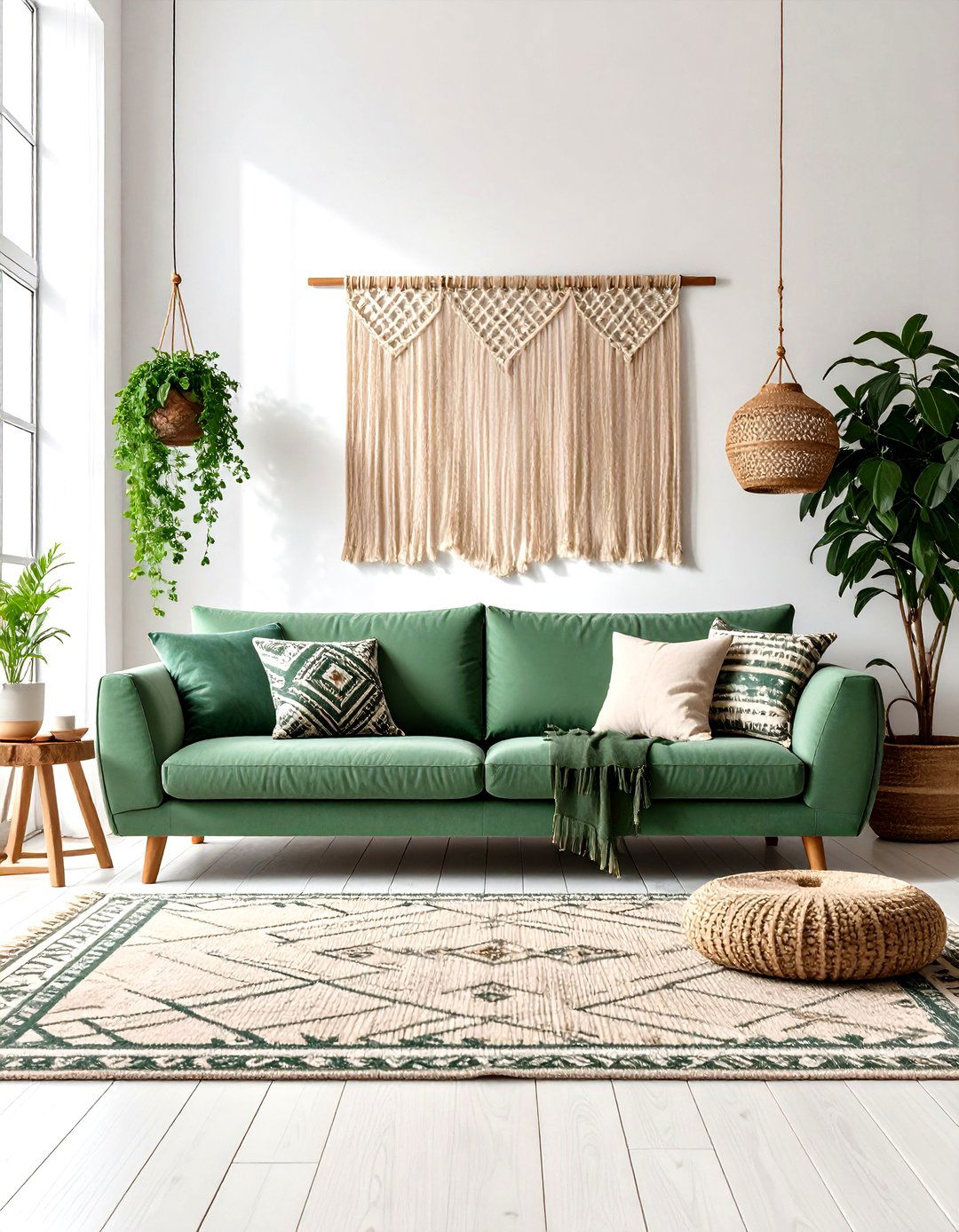
Macramé wall hangings, patterned kilims, and tasselled throws turn the muted sofa into a backdrop for worldly collected pieces. Mix mustard, pink, and teal textiles in small doses so the palette feels curated, not chaotic. Low timber coffee tables and stacked floor cushions encourage lounge-style seating, while trailing pothos plants soften vertical lines. String fairy lights above to bounce warm glows off the green upholstery, creating evening ambience that feels like a laid-back retreat.
6. Sage Green Couch with Moody Charcoal Walls
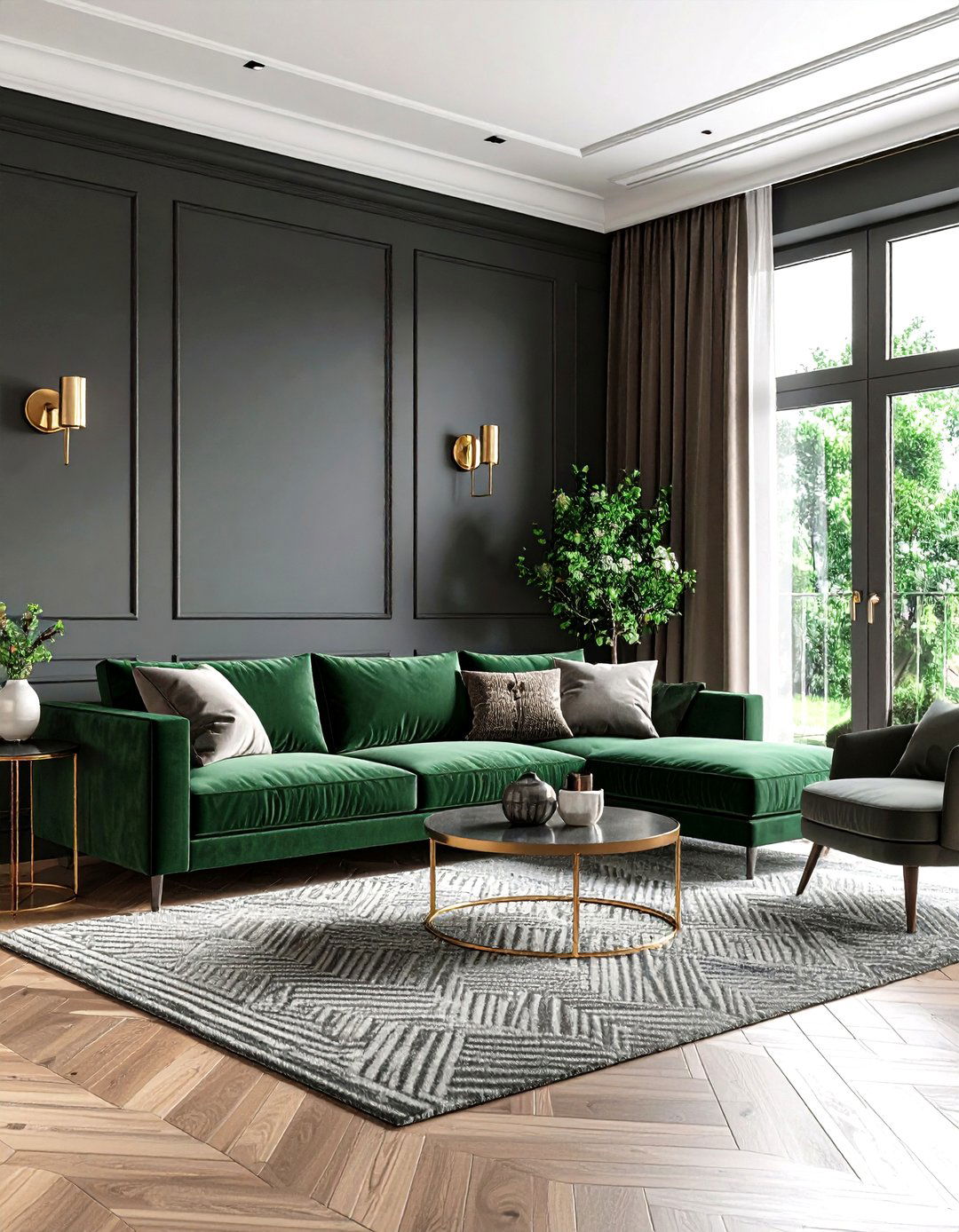
Although sage is light, pairing it with deep charcoal or graphite walls delivers dramatic sophistication. The sofa becomes a luminous focal point against the shadowy backdrop, and you can echo charcoal in a herringbone wool rug or matte-black metal shelving for cohesion. Brass sconces add warmth and prevent the room from feeling flat. Opt for velvet or chenille upholstery so the couch’s texture catches light and subtly brightens the dark envelope.
7. Sage Green Couch under Botanical Wallpaper Statement
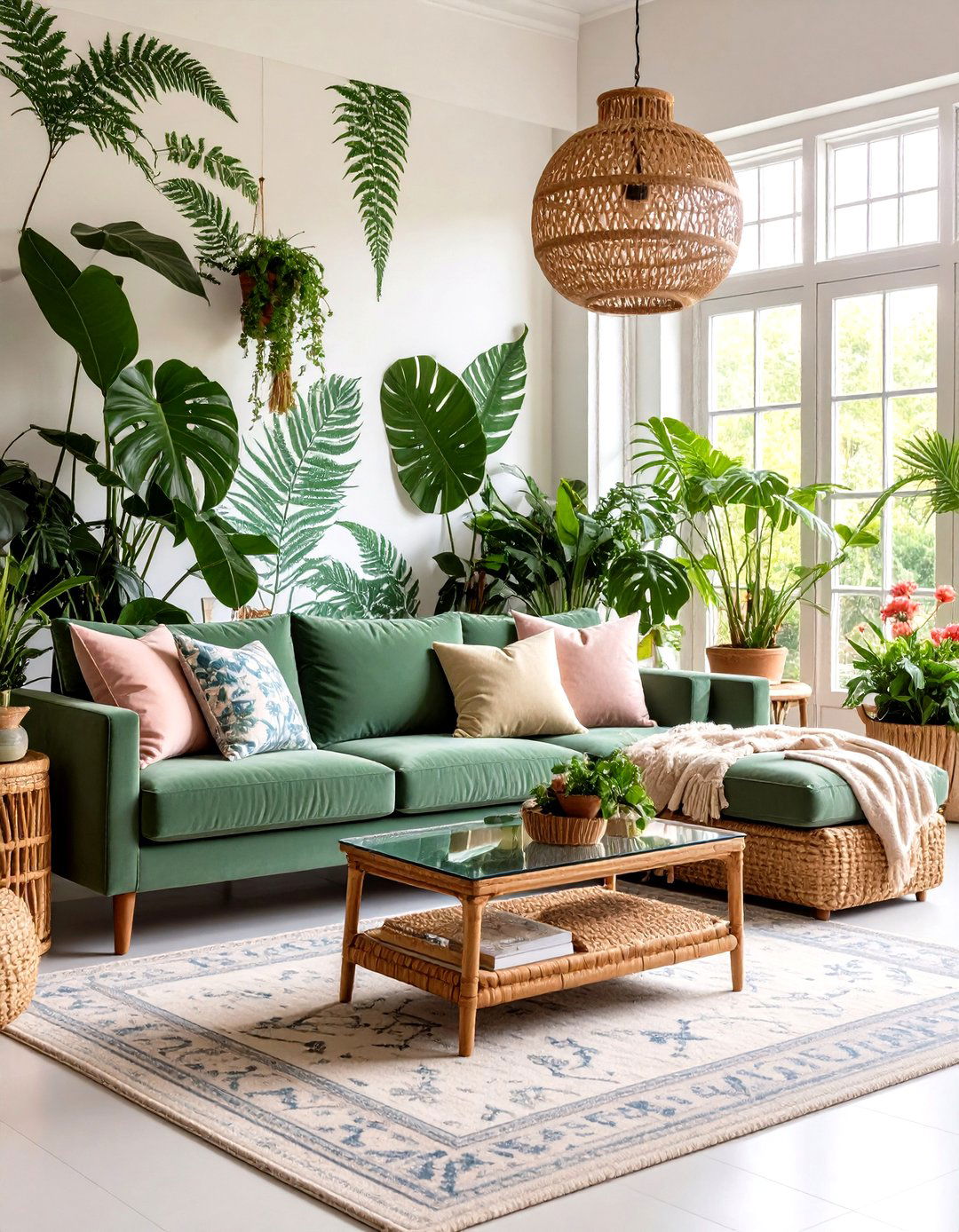
Overscale fern or palm prints double down on the nature theme and instantly transport you to a conservatory. Keep remaining walls plain so the mural can breathe, and pull one secondary color (perhaps blush or ochre) into cushions for harmony. A glass-top coffee table avoids visually cutting through the pattern, and woven baskets introduce tactile counterpoints. This combo works beautifully in sunrooms, where real foliage outside blurs into the illustrated greenery indoors.
8. Sage Green Couch Framed by Rustic Farmhouse Whites
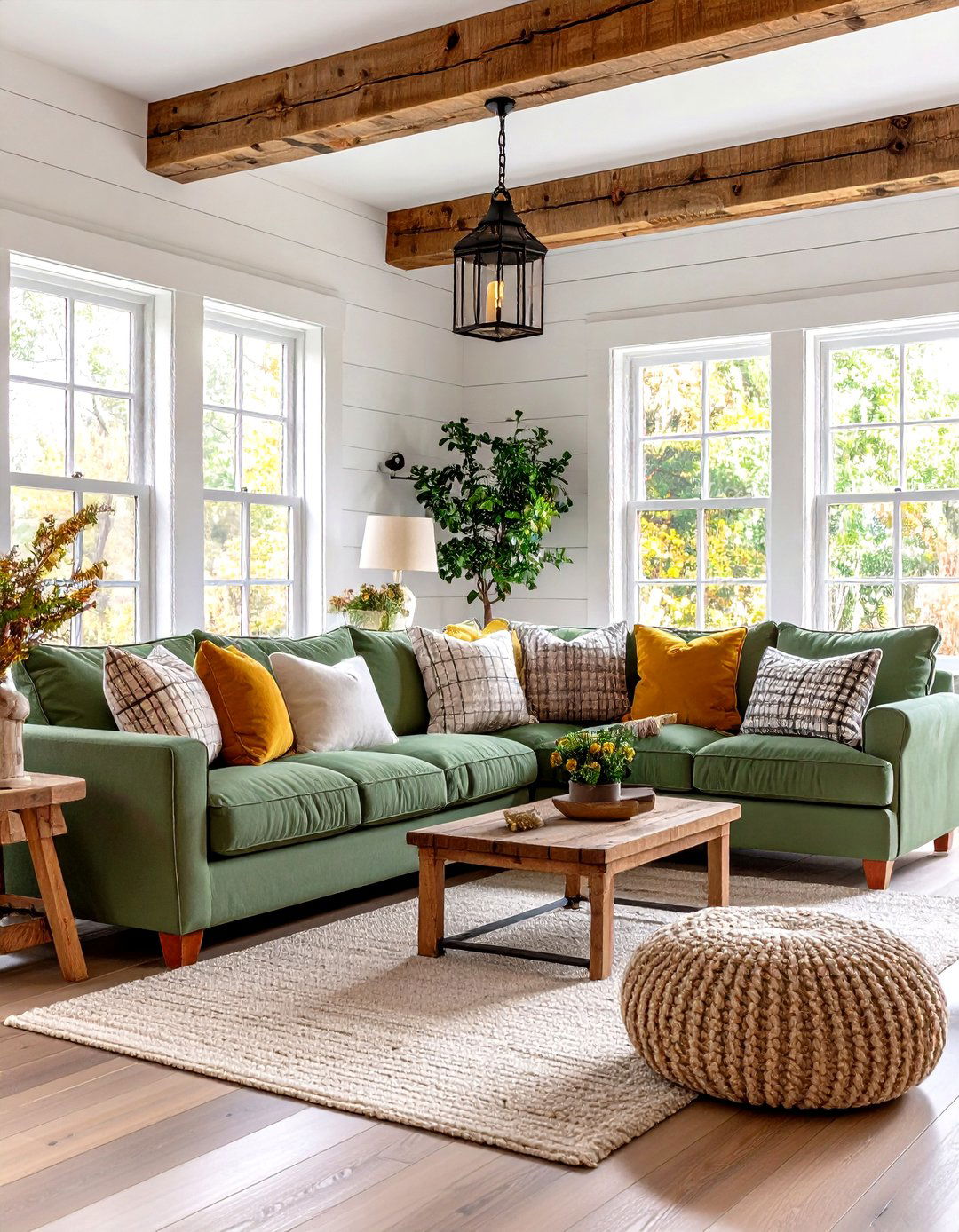
Pair the sofa with white shiplap walls, reclaimed-oak beams, and iron lantern pendants for a farmhouse yet fresh vibe. The green cuts through the all-white palette, preventing sterility, while aged timber beams echo organic roots. Layer striped ticking-fabric pillows and a sisal rug for tactile variance. A tall olive-tree planter beside the couch nods to pastoral landscapes and adds sculptural greenery that won’t compete.
9. Sage Green Couch in Mid-Century Modern Setting
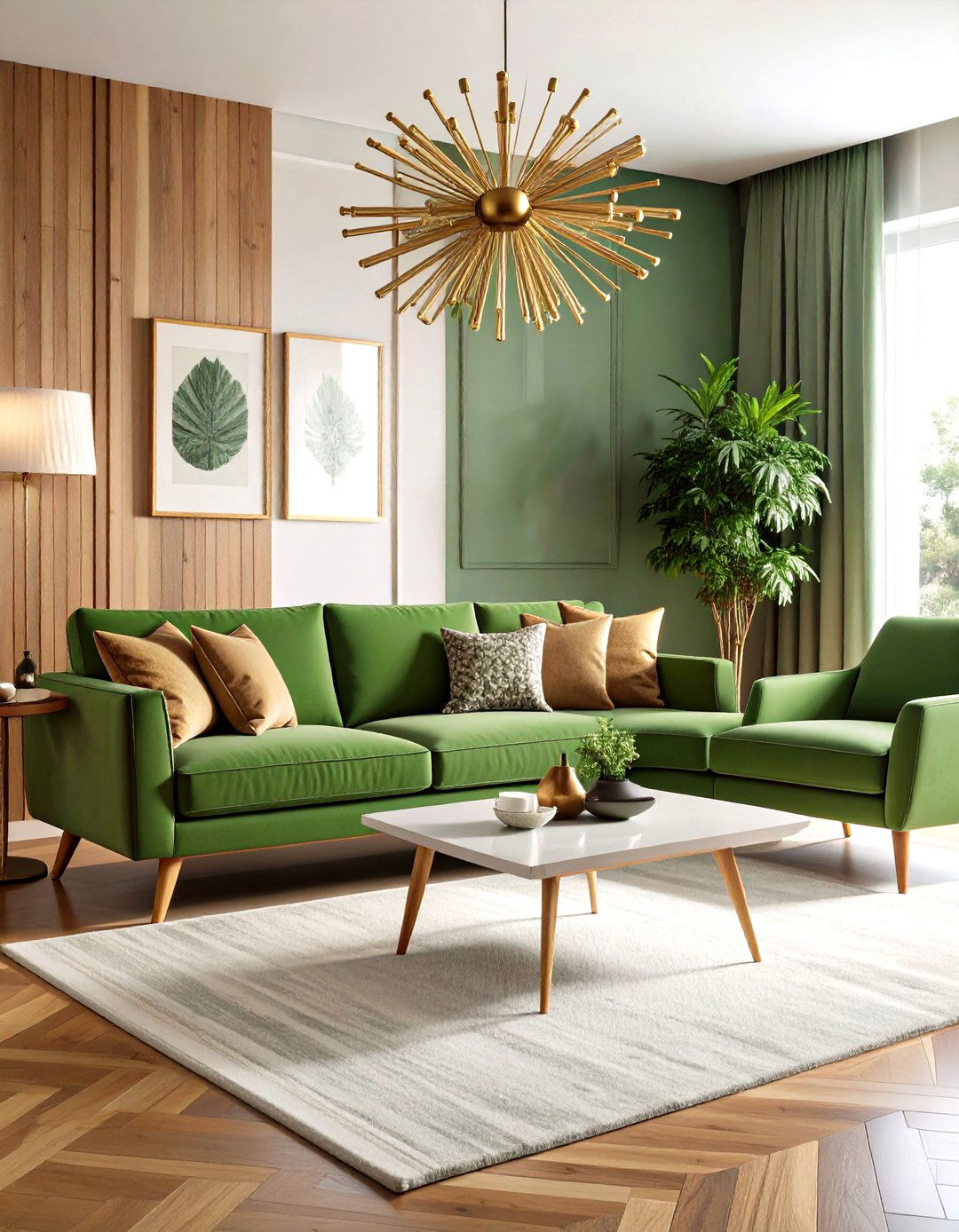
Splayed teak legs on the sofa instantly read mid-century. Back them with warm walnut paneling, geometric artwork, and a starburst brass chandelier to seal the era. Choose accent colors like mustard or denim blue—a palette ubiquitous in 1950s palettes yet surprisingly current. An angular marble-topped coffee table adds refinement without fighting the wood grain. Finish with a graphic wool rug in off-white and olive for cohesive period flair.
10. Sage Green Couch with Navy & Brass Accents
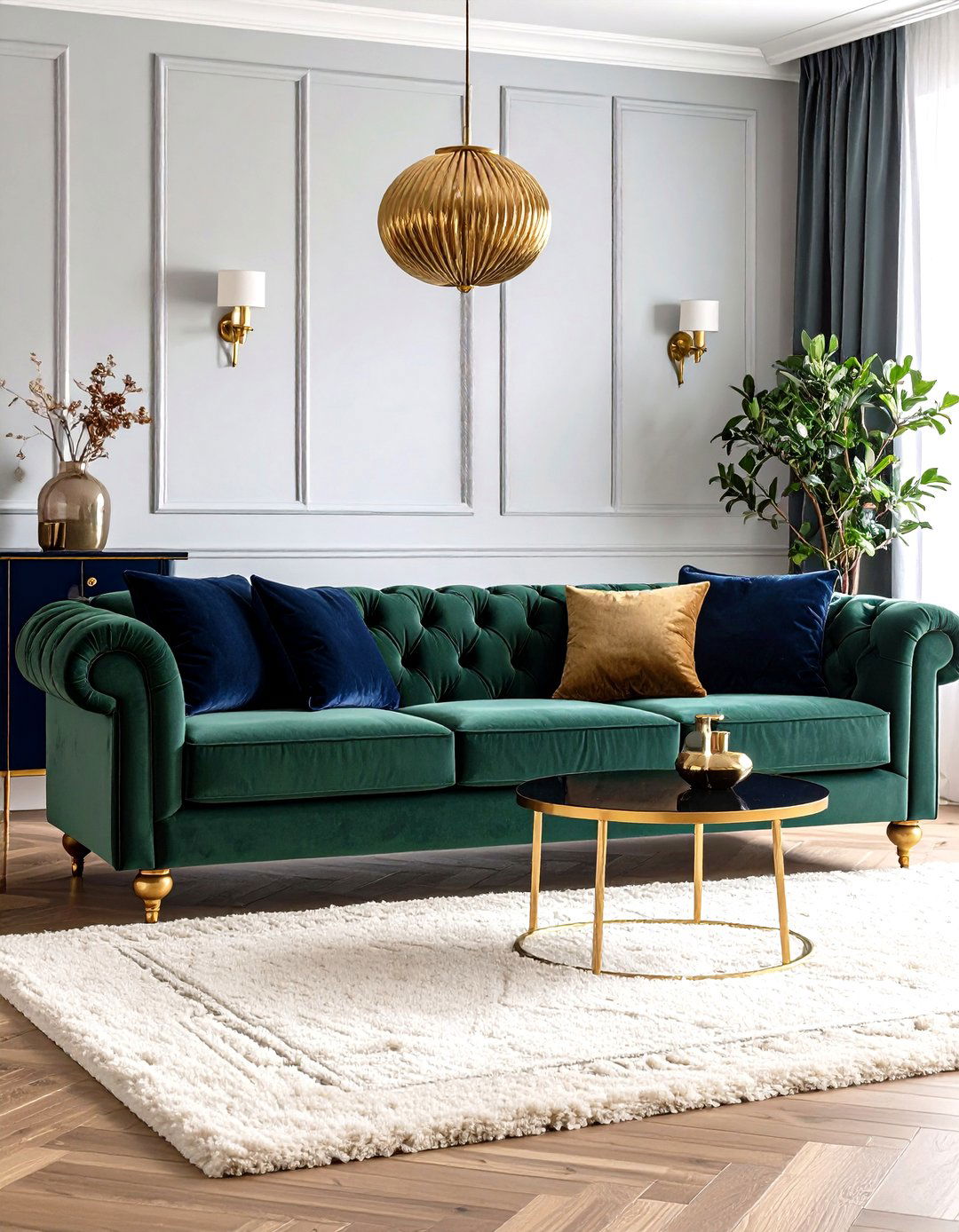
Deep navy cushions and a matching lacquer sideboard introduce depth, while slim brass picture-light sconces lend understated glamour. The cool blue anchors the pastel sofa, preventing it from feeling washed out, and brass detailing warms everything up. Add an abstract navy-ink print above the couch to reinforce the palette triangle and use a plush cream rug for visual breathing room.
11. Sage Green Couch Complemented by Soft Blush Accents
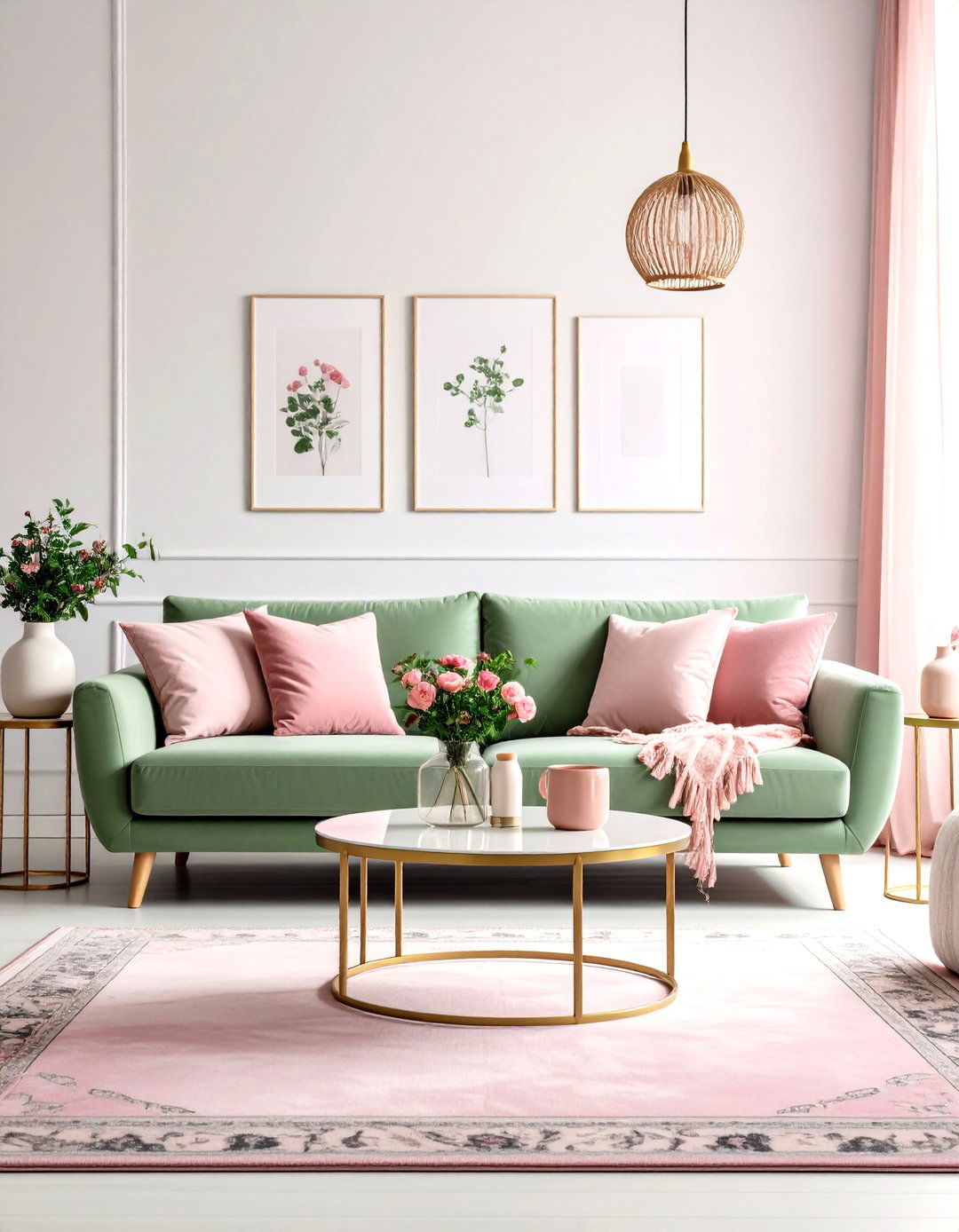
Pairing sage with muted blush creates a spa-like palette of complementary pastels. Blush velvet throw pillows, rose-tinted glass vases, and a faded Persian rug weave romantic undertones through the living room. The gentle contrast enhances the sofa’s gray base, letting both colors appear richer yet still tranquil. Brass table legs and picture frames tie everything together while adding subtle gleam.
12. Sage Green Couch in Light-Filled Coastal Scheme

White shiplap ceilings, bleached-oak floors, and sandy-beige jute rugs create a coastal framework where the sage couch stands in for seagrass hues. Add striped navy-and-white pillows and driftwood-inspired side tables for beachy authenticity. Sheer linen curtains keep sightlines to any outdoor view unobstructed, and a woven rattan pendant echoes shoreline textures. The result is breezy, sun-kissed, and effortlessly vacation-ready.
13. Sage Green Couch as Zoning Anchor in Open-Plan Loft
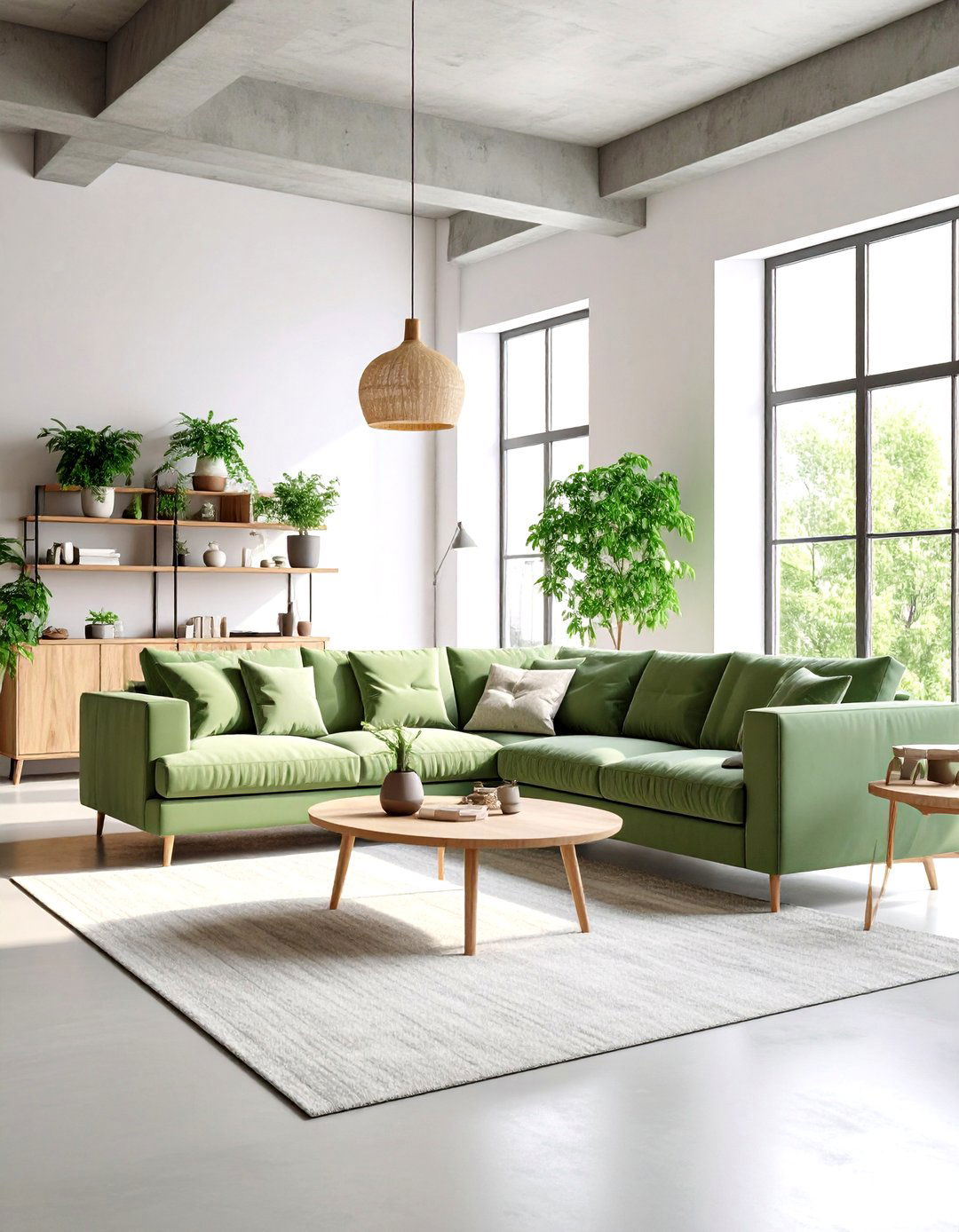
In a large loft, float the couch centrally on a textured rug to delineate the living area from kitchen and dining zones. The muted green differentiates space without adding loud color, and its “friendly neutral” quality integrates with disparate finishes like concrete floors and stainless appliances. Use back-of-sofa console shelving to double as room divider and storage, keeping circulation clear. Layer ceiling-height plants behind for vertical balance.
14. Sage Green Couch with Geometric Black-and-White Rug
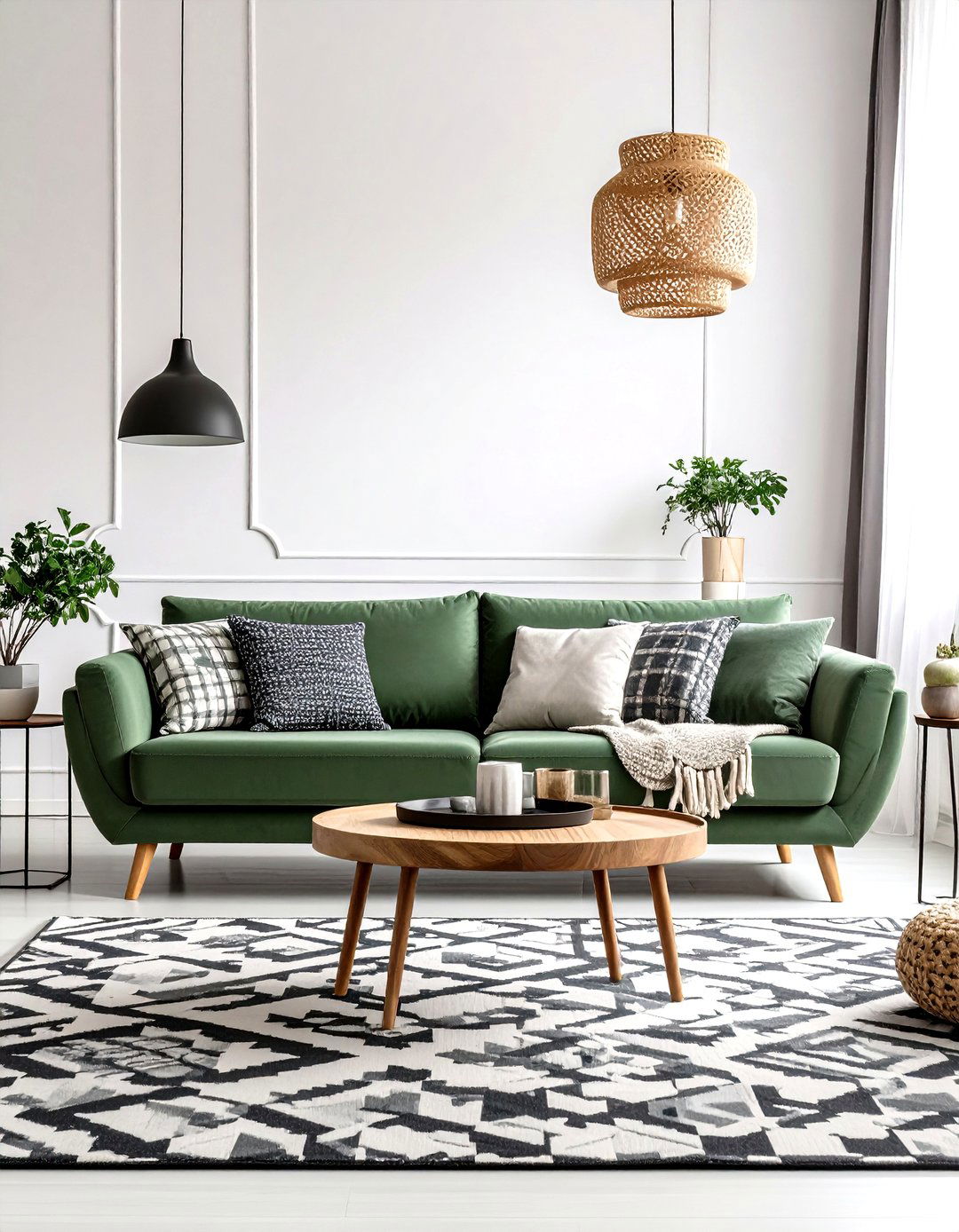
A bold monochrome rug injects graphic punch while letting the sofa’s color reign. Repeat the rug’s crisp lines in grid-pattern cushions or a gallery wall of black frames. Because black and white are high contrast, the sage reads even softer, offering balance between statement and serenity. Choose matte black floor lamps and minimal coffee-table styling so the eye has breathing space.
15. Sage Green Couch Surrounded by Vintage Eclectic Mix
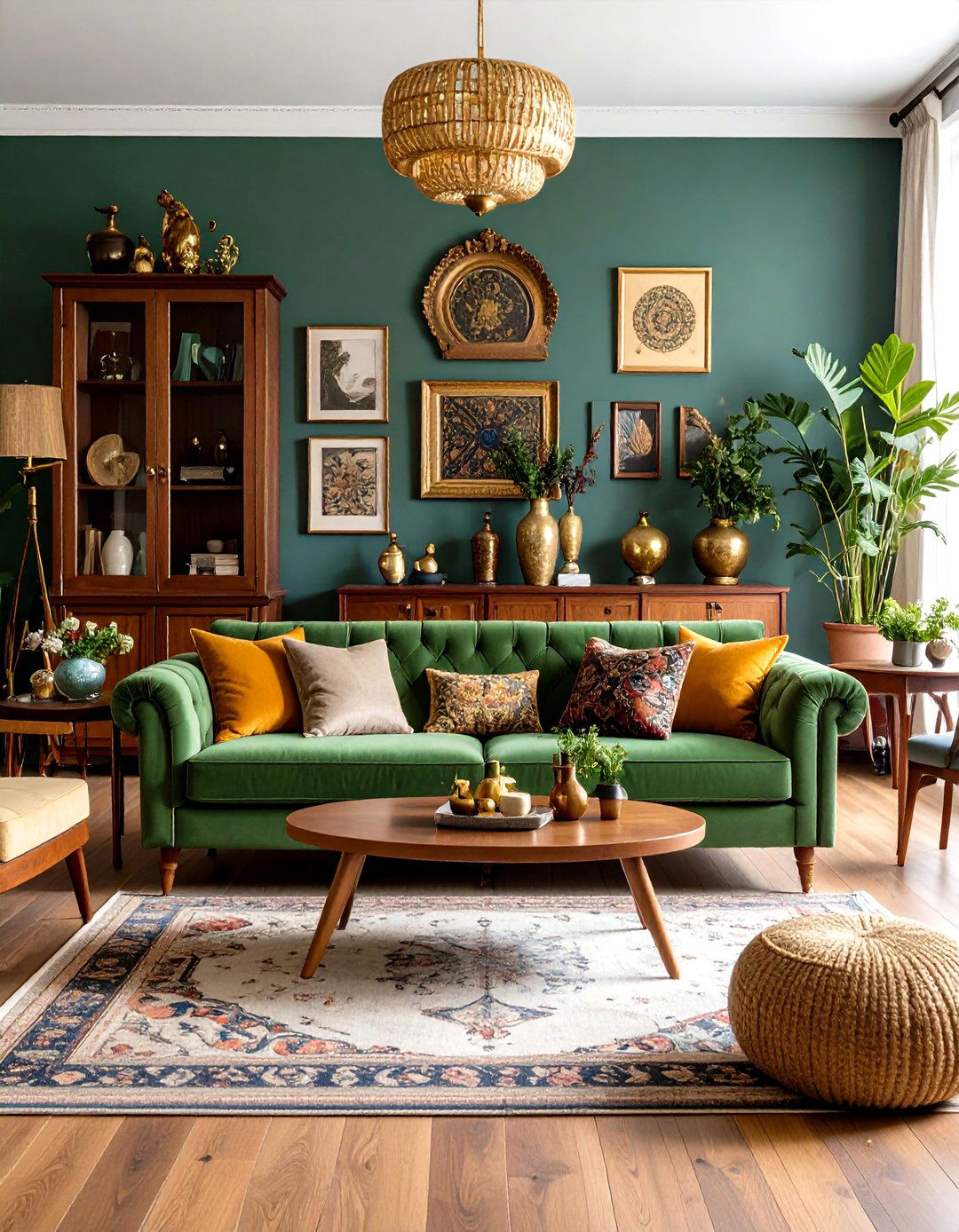
Layer mid-century teak, Art Deco brass, and antique Persian textiles around the sofa for an eclectic collector’s vibe. Because sage is subdued, it unifies disparate eras without overwhelming. Use gallery-wall art frames in varying woods but similar mat sizes to create cohesion. Finish with a vintage bar cart and filament-bulb sconces that nod to bygone days while feeling current.
16. Sage Green Couch in Japandi Low-Furniture Layout

Combine Japanese minimalism and Scandinavian warmth with furniture that sits low and linear. Place the sage sofa on sleek oak legs, add a pale beech coffee platform, and keep accessories restrained—think a single black stoneware vase and linen-blend cushions. Neutral tatami-style rugs and delicate paper lanterns enhance the zen quality, letting the muted green feel meditative rather than decorative.
17. Sage Green Couch Highlighted by Metallic Gold Details

Gold picture frames, a slim brass-rim mirror, and a brushed-gold floor lamp spotlight the couch without relying on bright color. Metallic warmth visually elevates sage, making the scheme feel urbane and polished. To avoid over-glamour, ground the shine with textural elements: a nubby wool throw, distressed leather pouf, or chunky sisal rug. The interplay of luxe and organic keeps the room balanced.
18. Sage Green Couch with Earth-Tone Terracotta Flooring
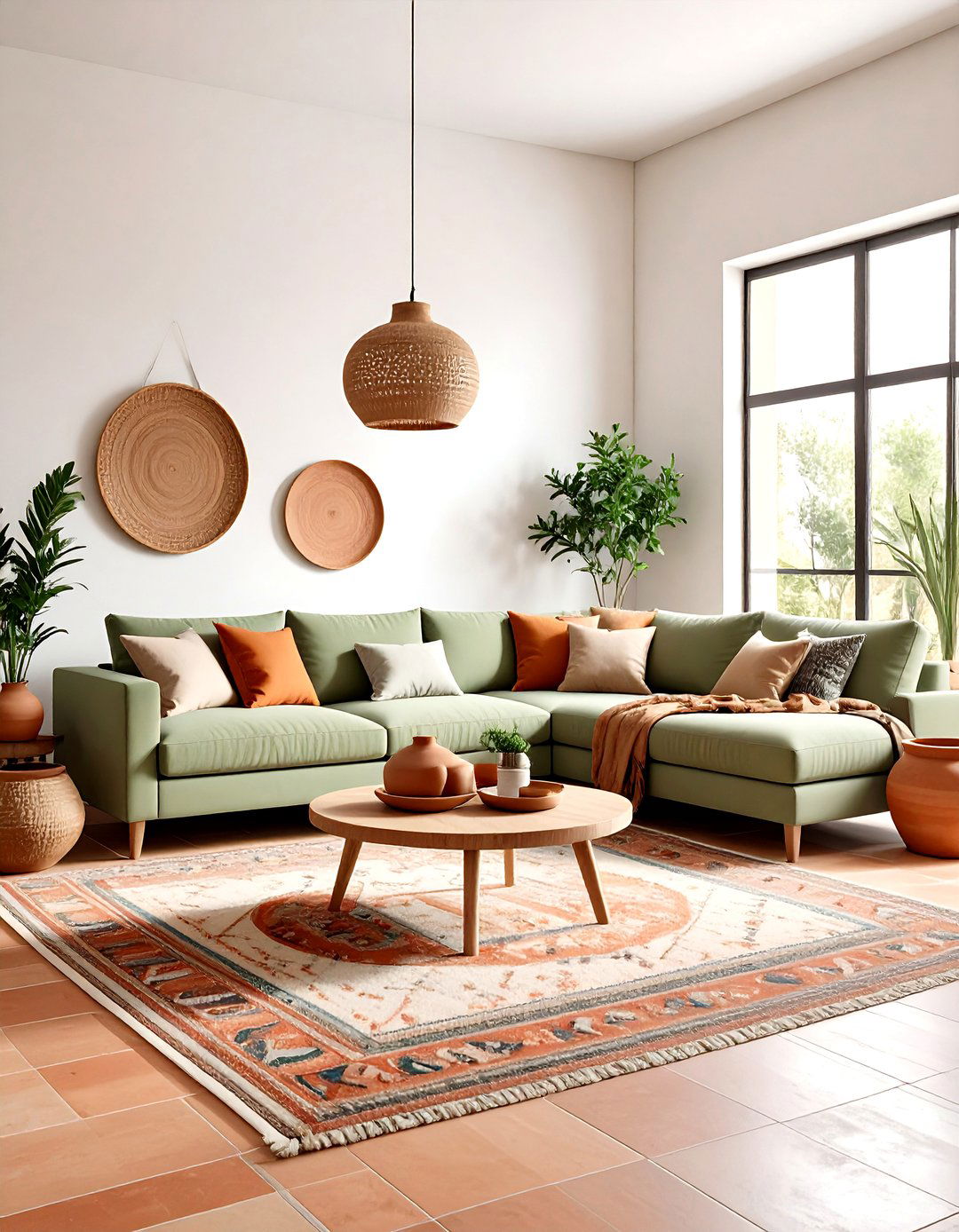
If you’re blessed with terracotta tiles or brick pavers, let the sage sofa play off the burnt-clay warmth. Add cream plaster walls and hand-thrown pottery to echo earthen origins. A patterned kilim blending rust, sage, and cream ties floor and couch seamlessly. Use black-iron pendant lights for rustic edge and pop a live olive-tree in a terracotta pot for living color continuity.
19. Sage Green Couch Elevated by Layered Greenhouse Plants
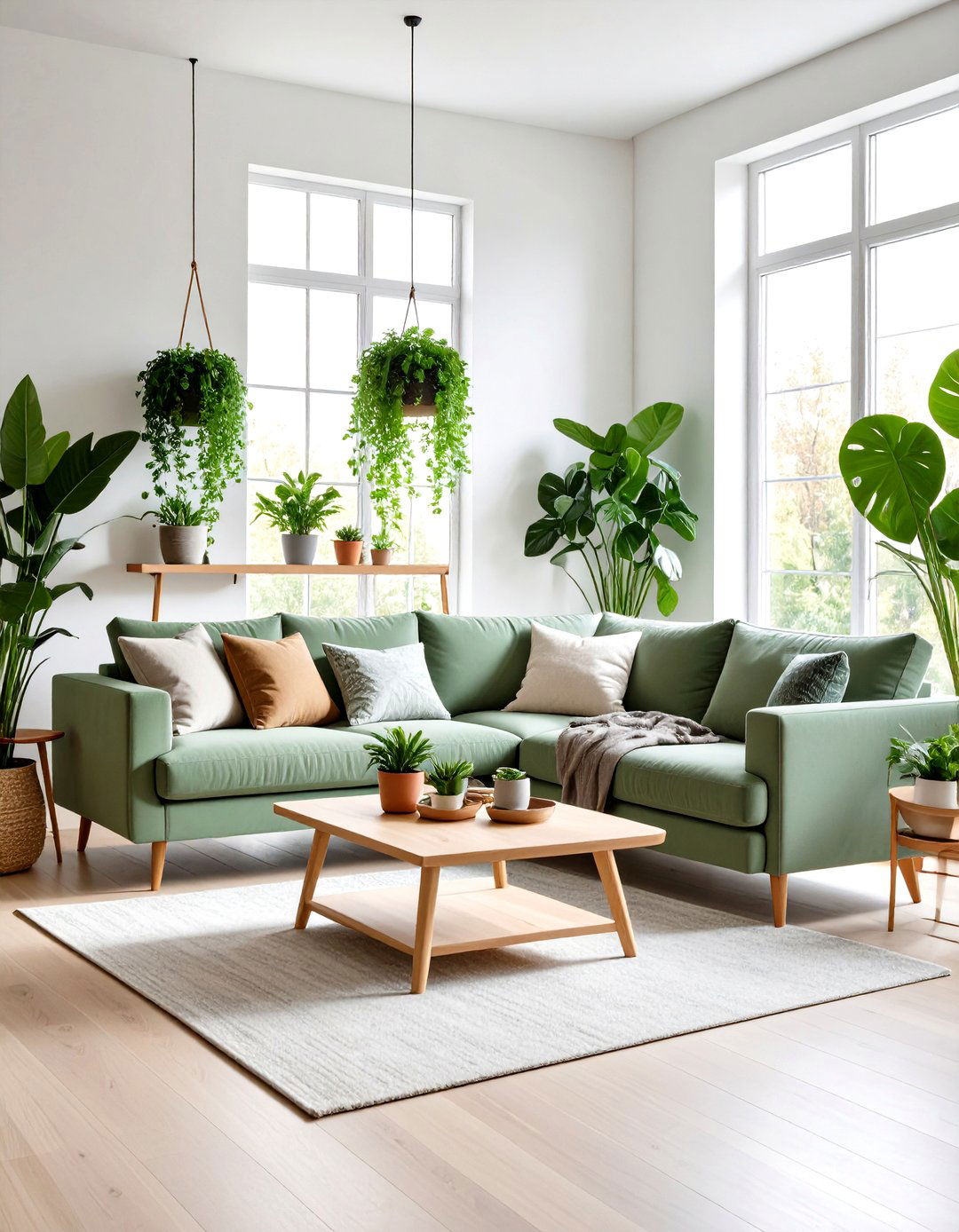
Cluster fiddle-leaf figs, monstera, and trailing ivy around and above the sofa for a lush indoor-garden aesthetic. Vary pot heights with stools and plant stands to form a living backdrop that amplifies the couch’s natural character. Keep hard finishes minimal—think clear acrylic coffee table—so foliage and sofa dominate. A reclaimed-wood bench under the window doubles as plant shelf and extra seating when guests arrive.
20. Sage Green Couch Transforming a Narrow North-Facing Room

Sage’s light-reflective quality brightens cooler, low-sun spaces, especially when teamed with soft white walls and mirrors. Lay a pale wool runner rug lengthwise to elongate the floor, and mount floating shelves above radiator height to free up width. Opt for slim-armed sofa silhouettes so seating feels generous without cramping circulation. A trio of wall-mounted sconces replaces bulky floor lamps, keeping walkways clear.
Conclusion:
From earthy terracotta pairings to monochrome sage cocoons, these 20 strategies prove a sage green couch can flex across aesthetics, room sizes, and lighting conditions while always evoking calm. Mix and match the ideas—or start with your favorite—and let this adaptable hue become the serene anchor your living room deserves.


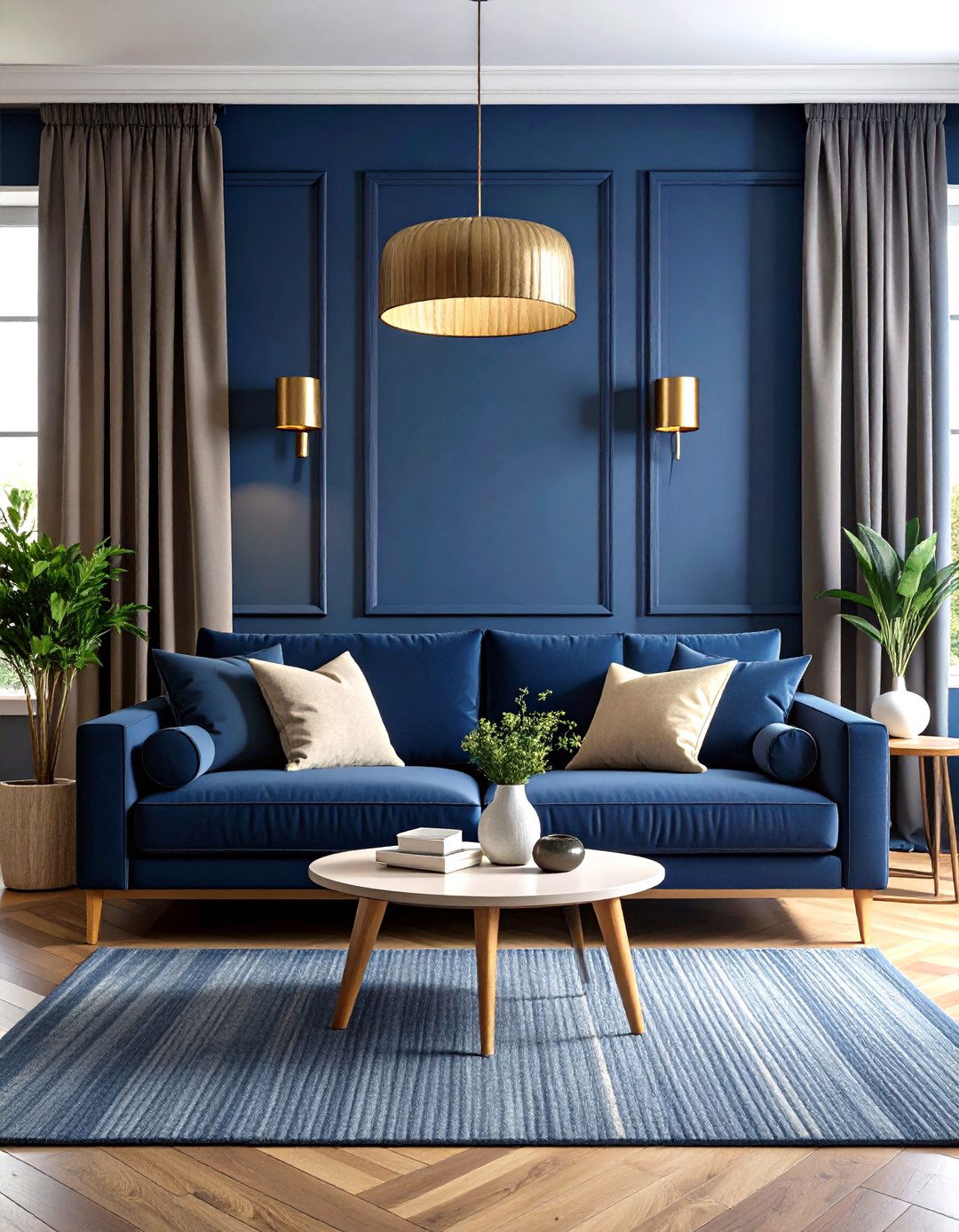
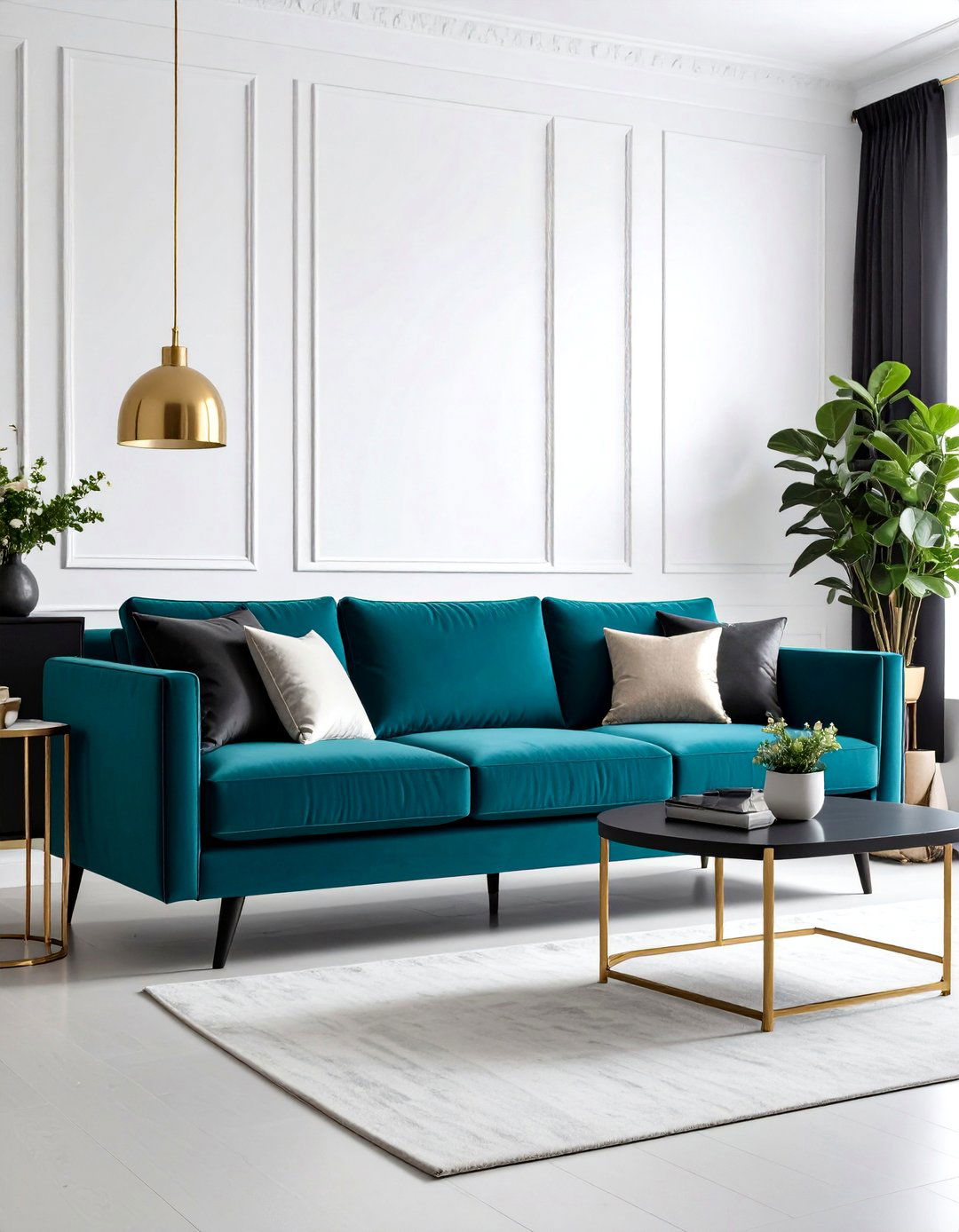
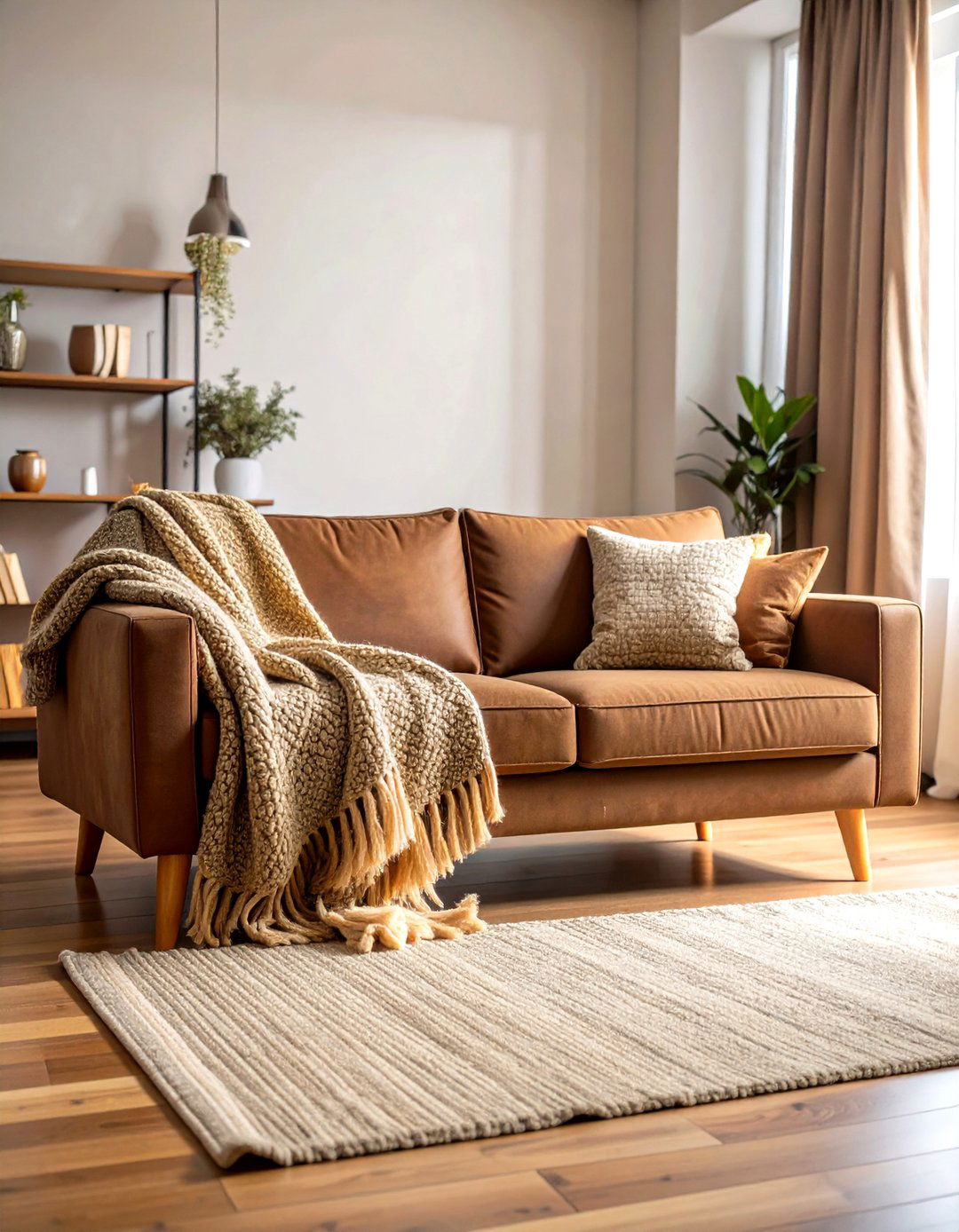
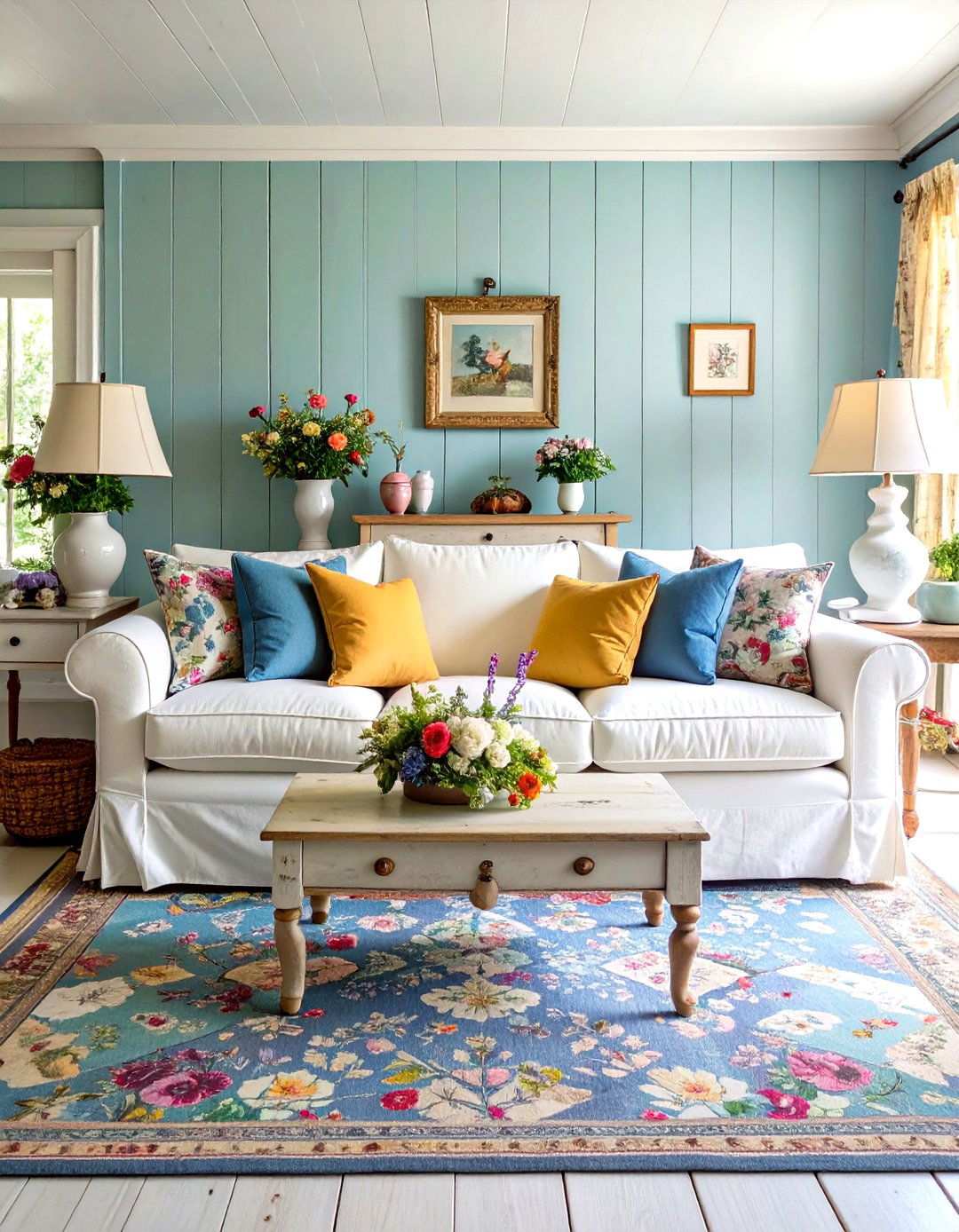
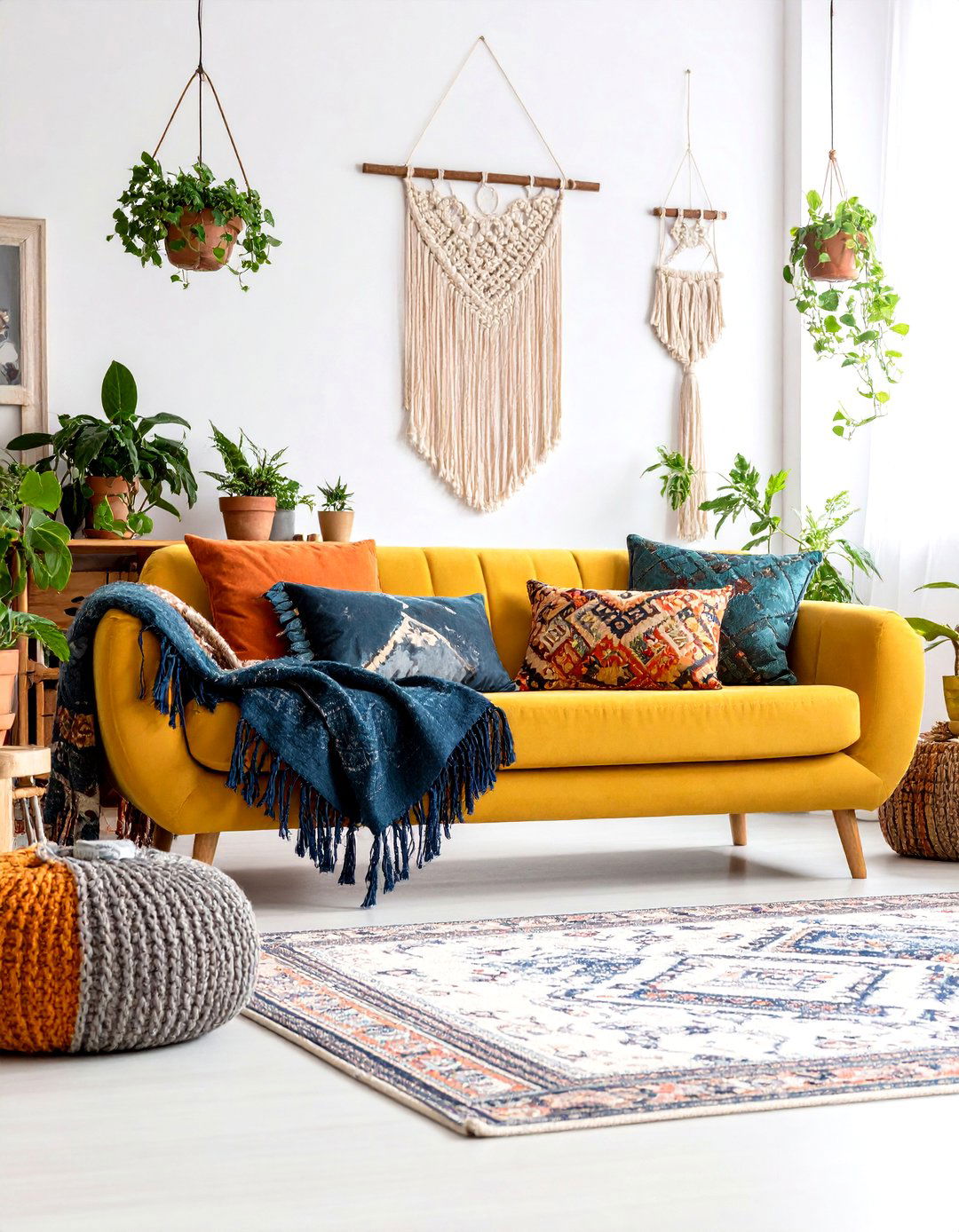
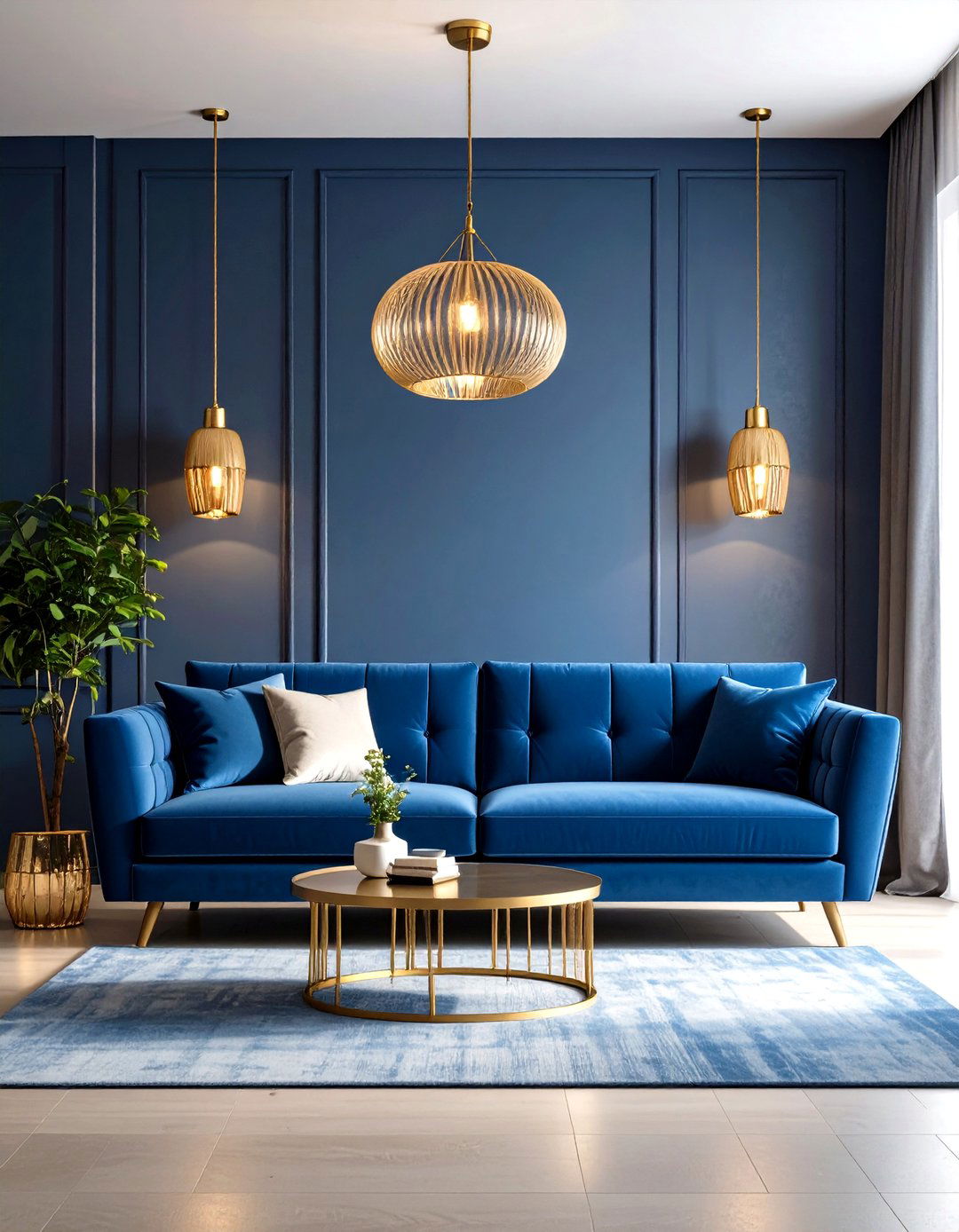
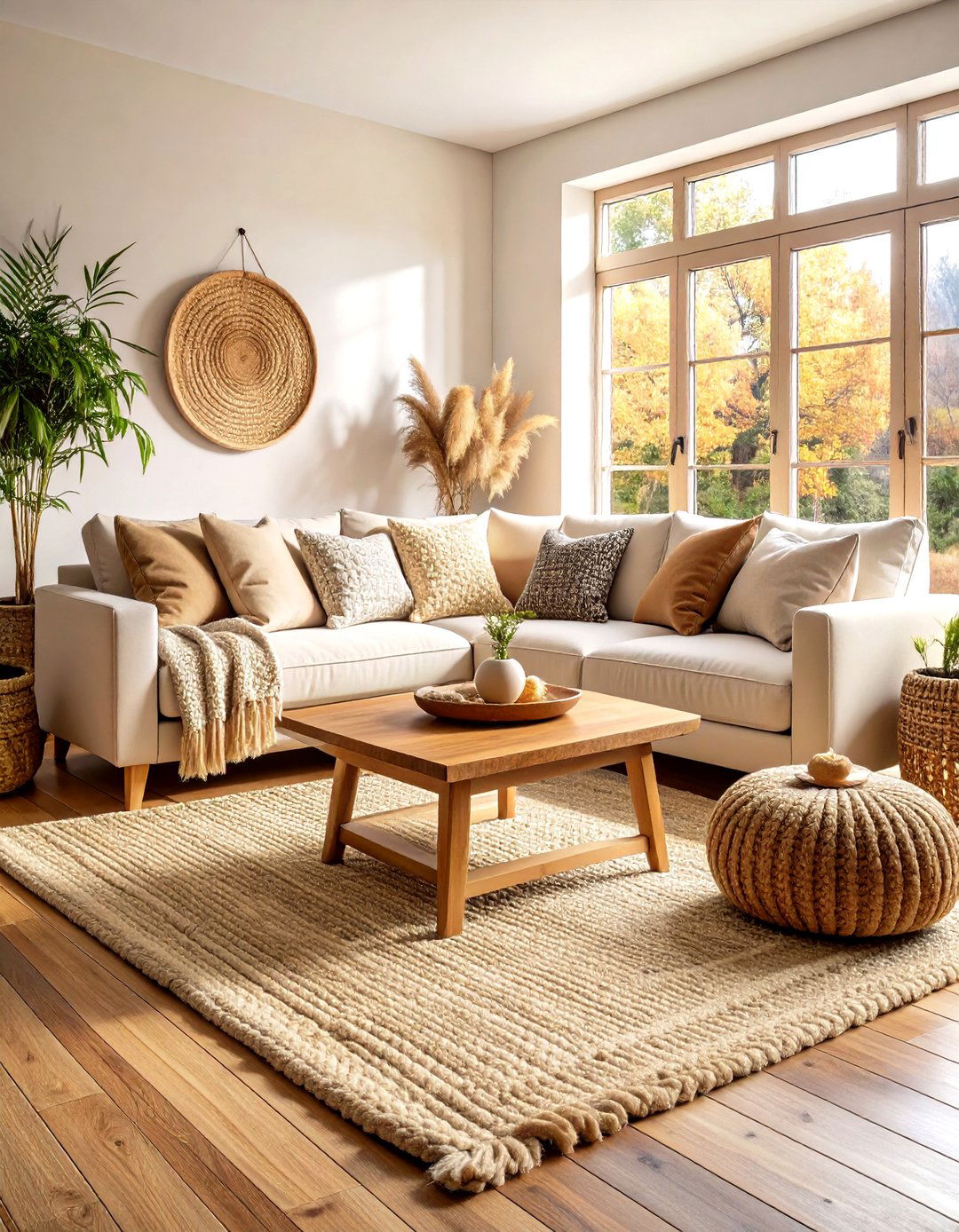
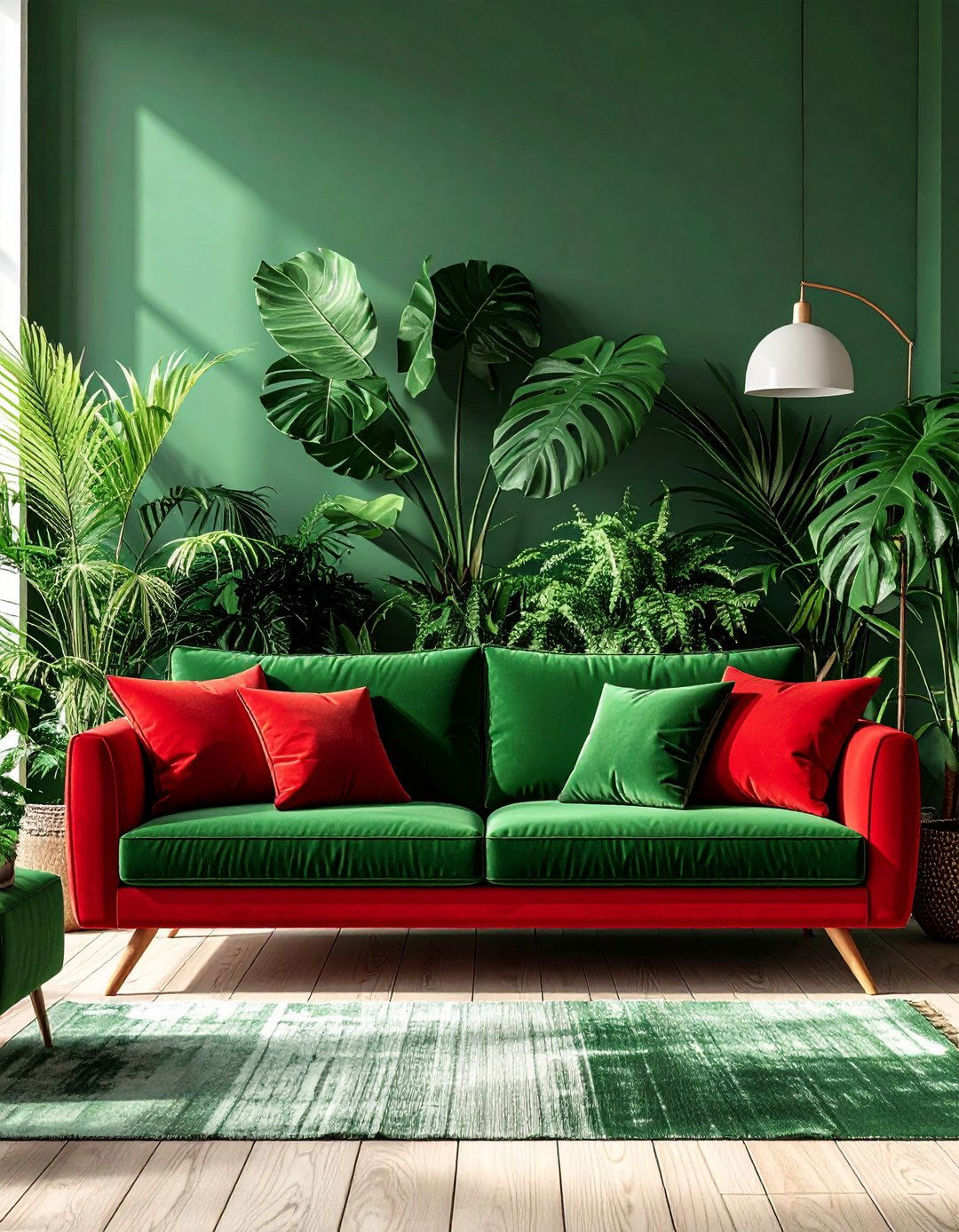
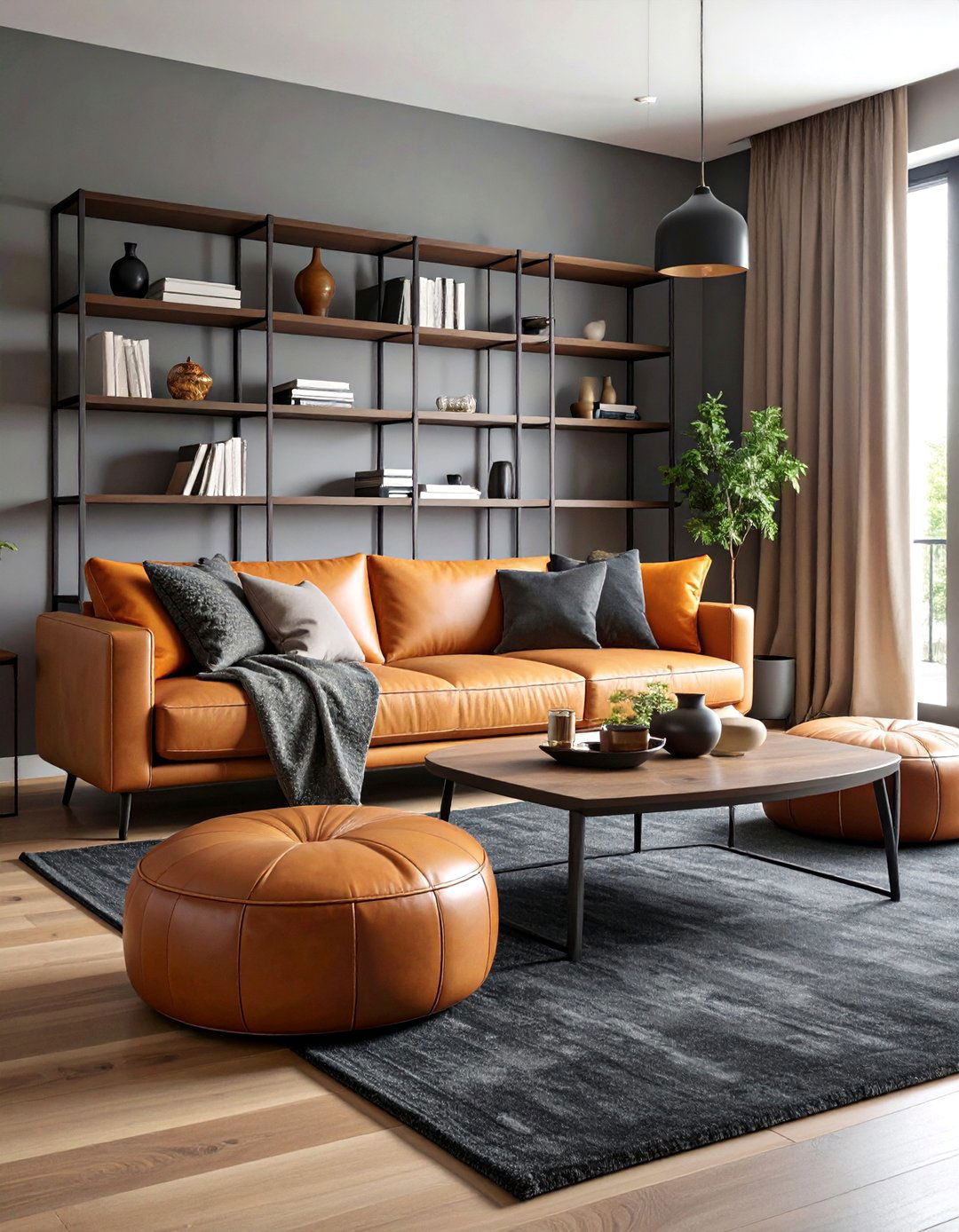
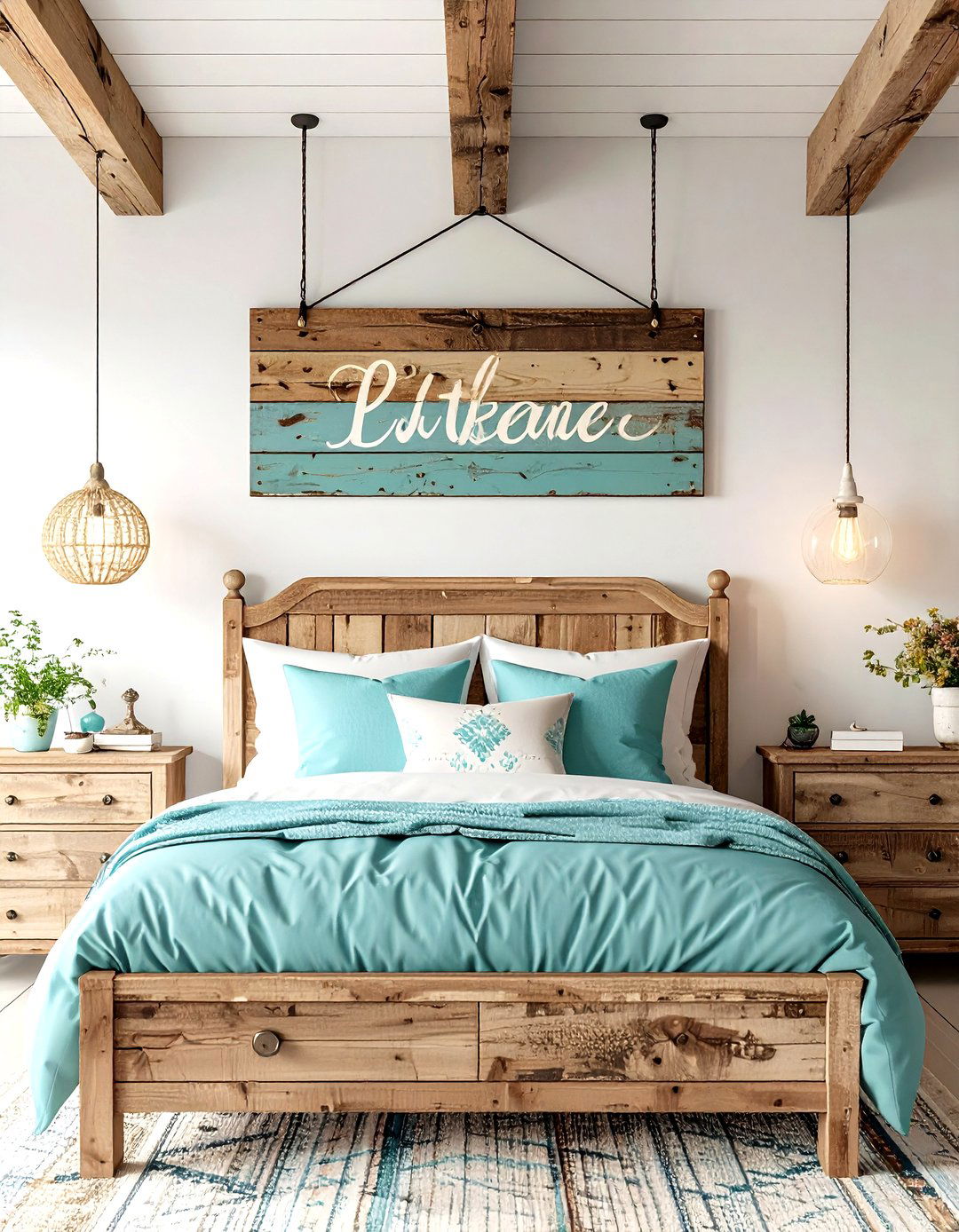
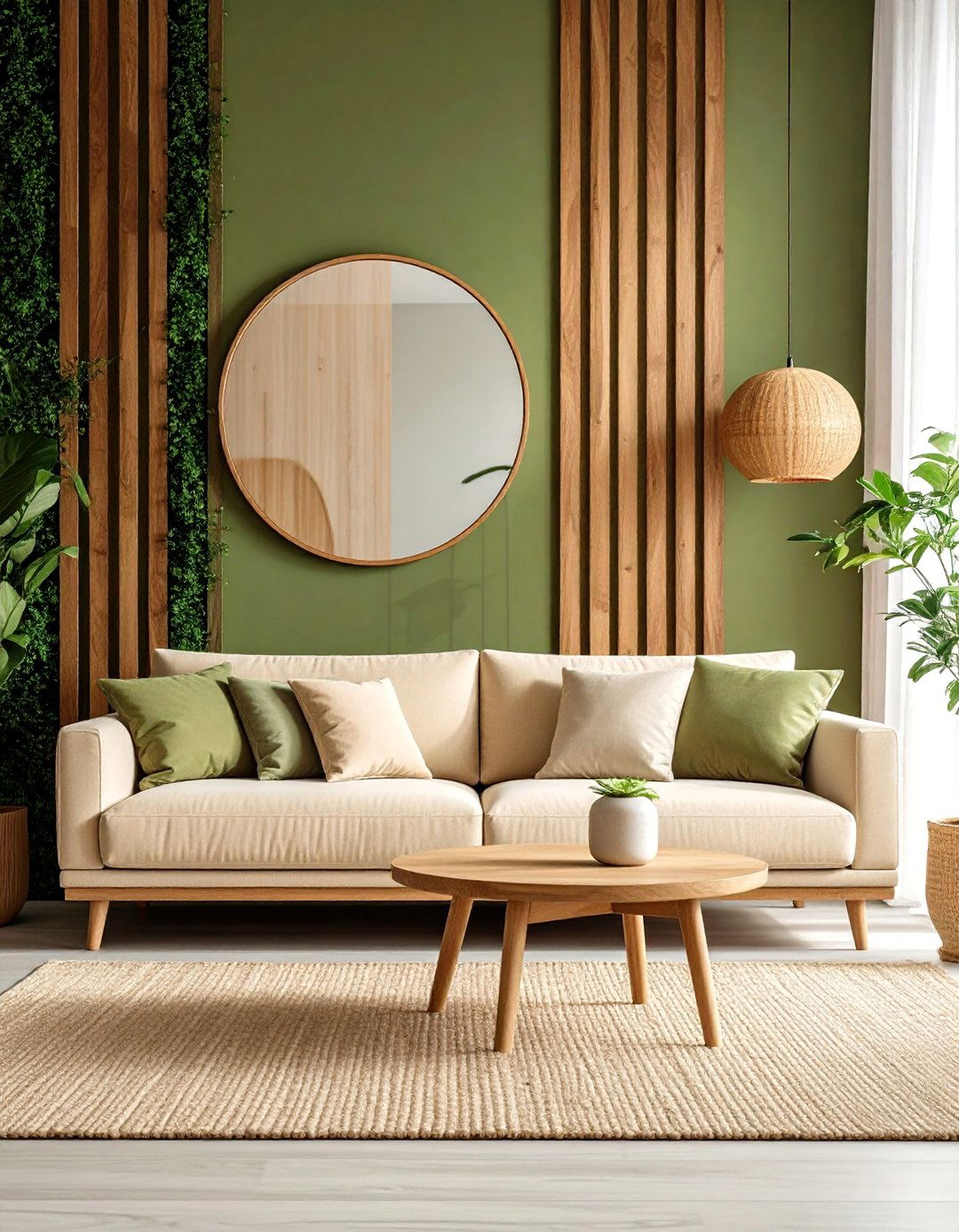
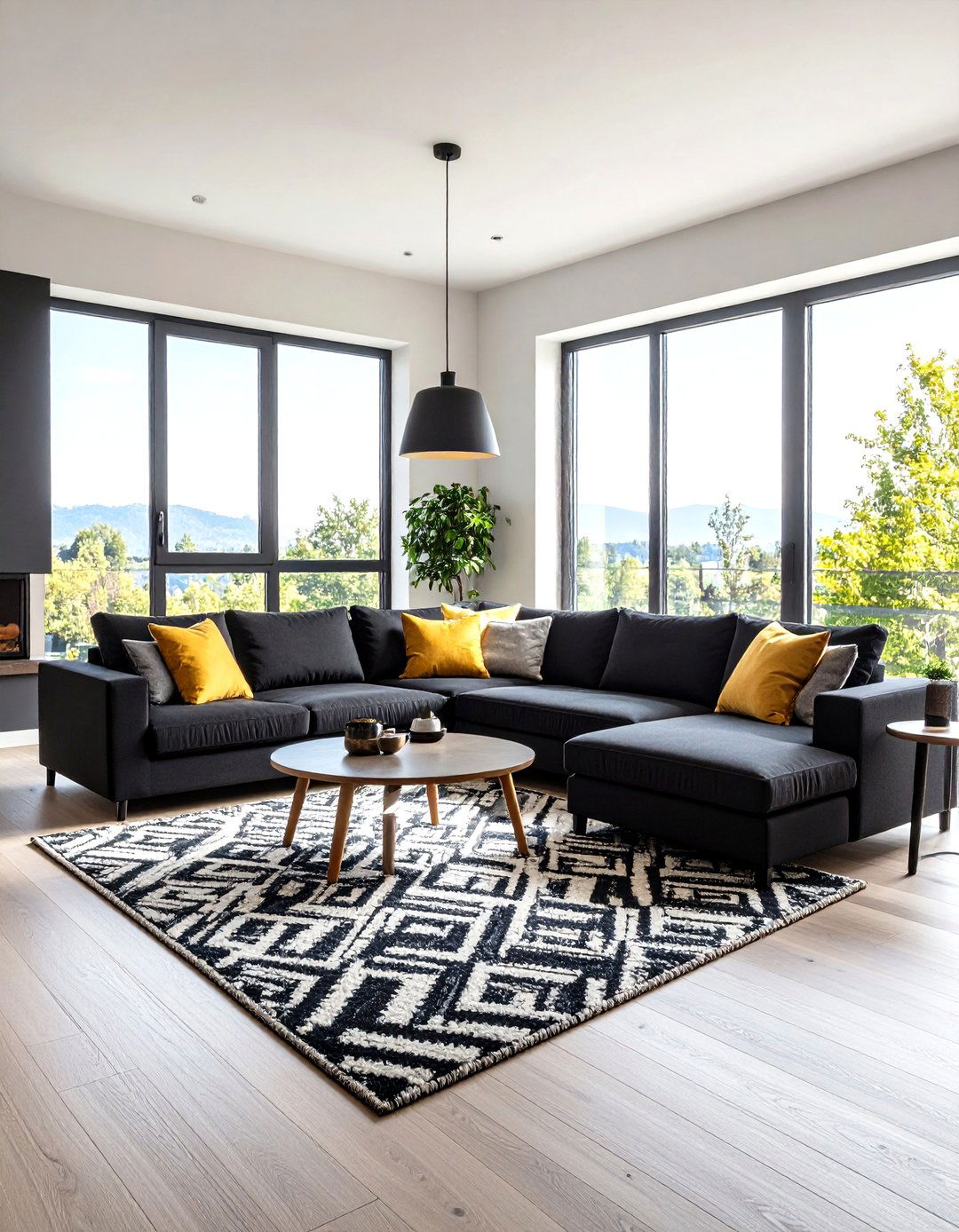
Leave a Reply